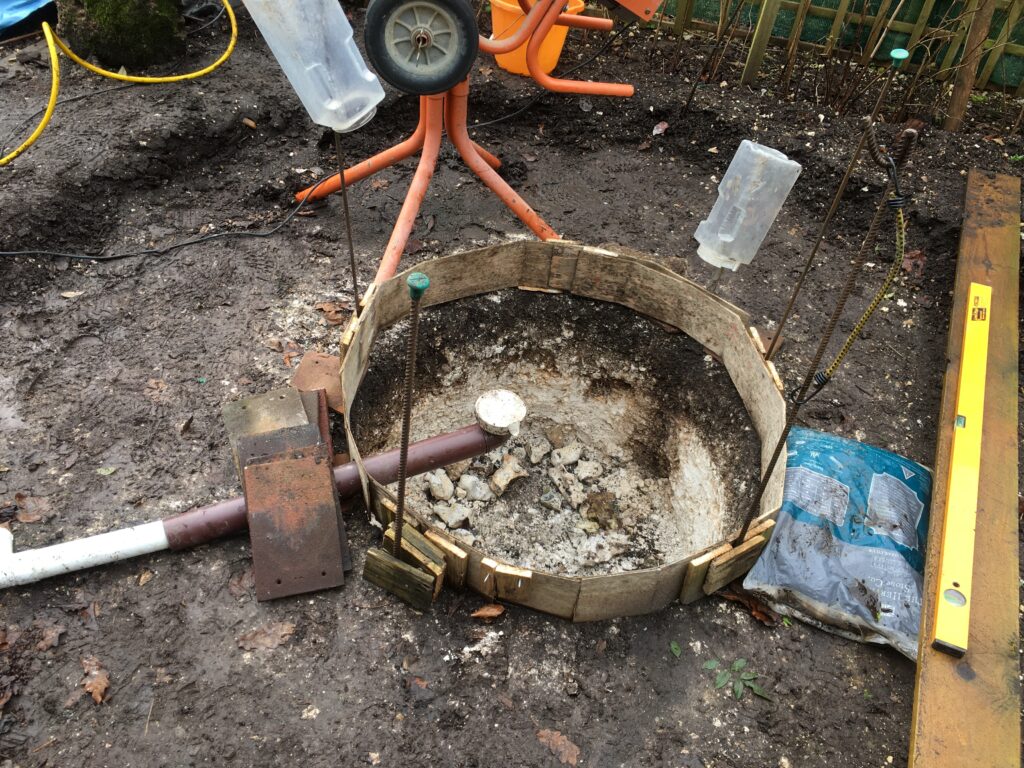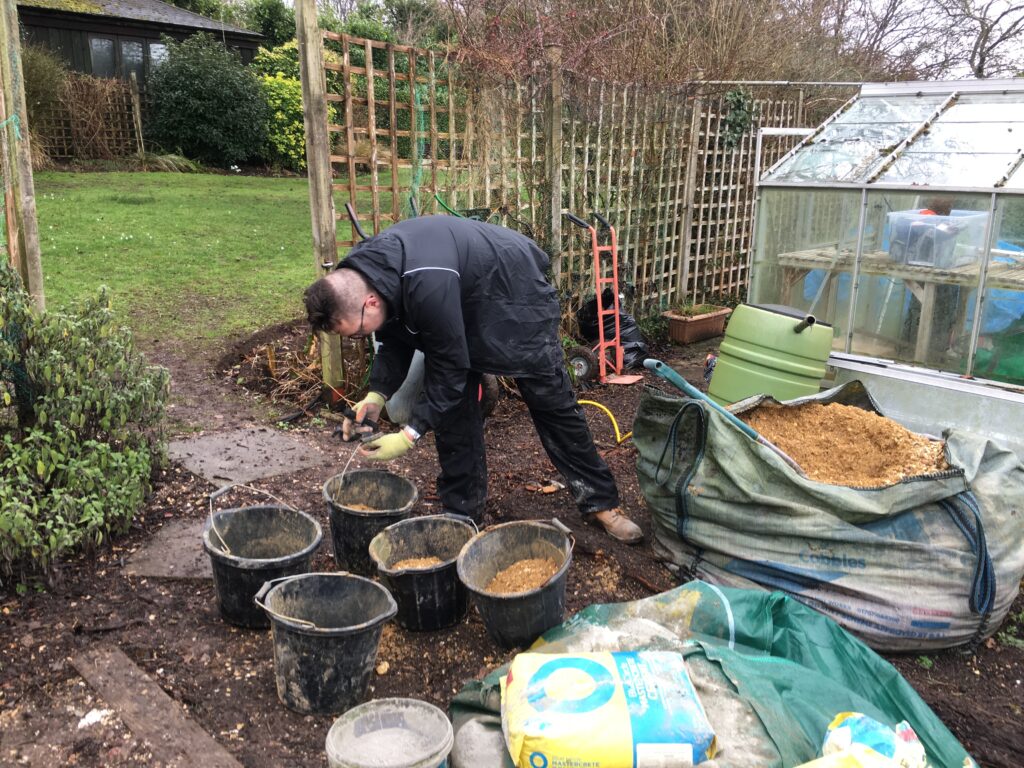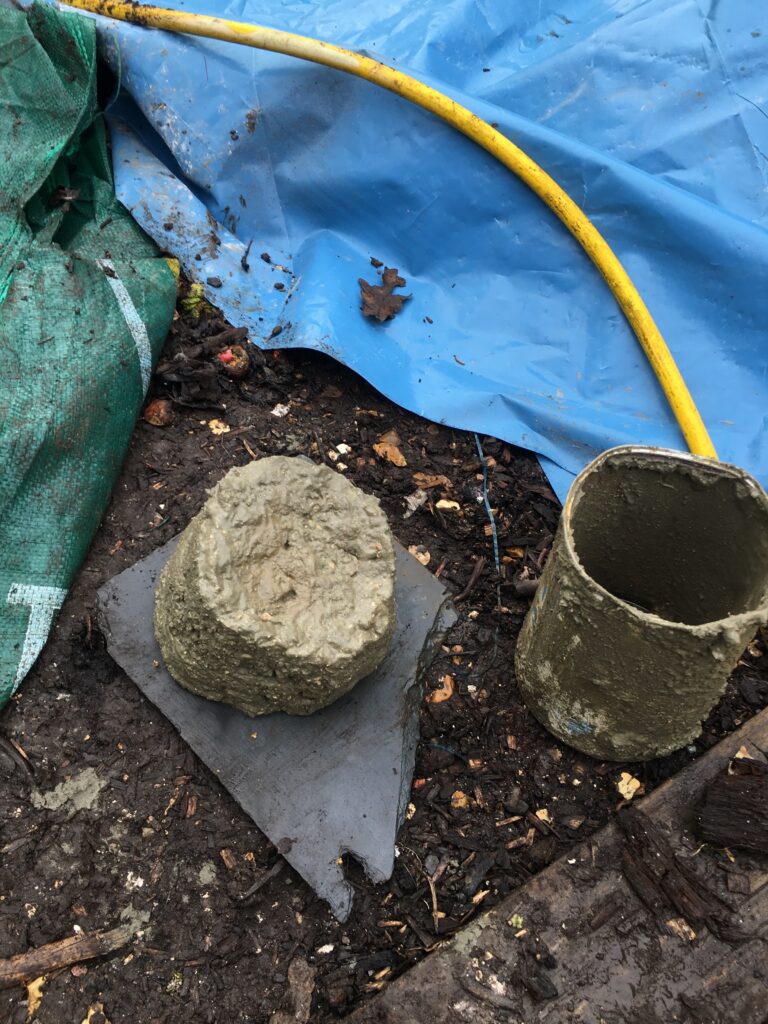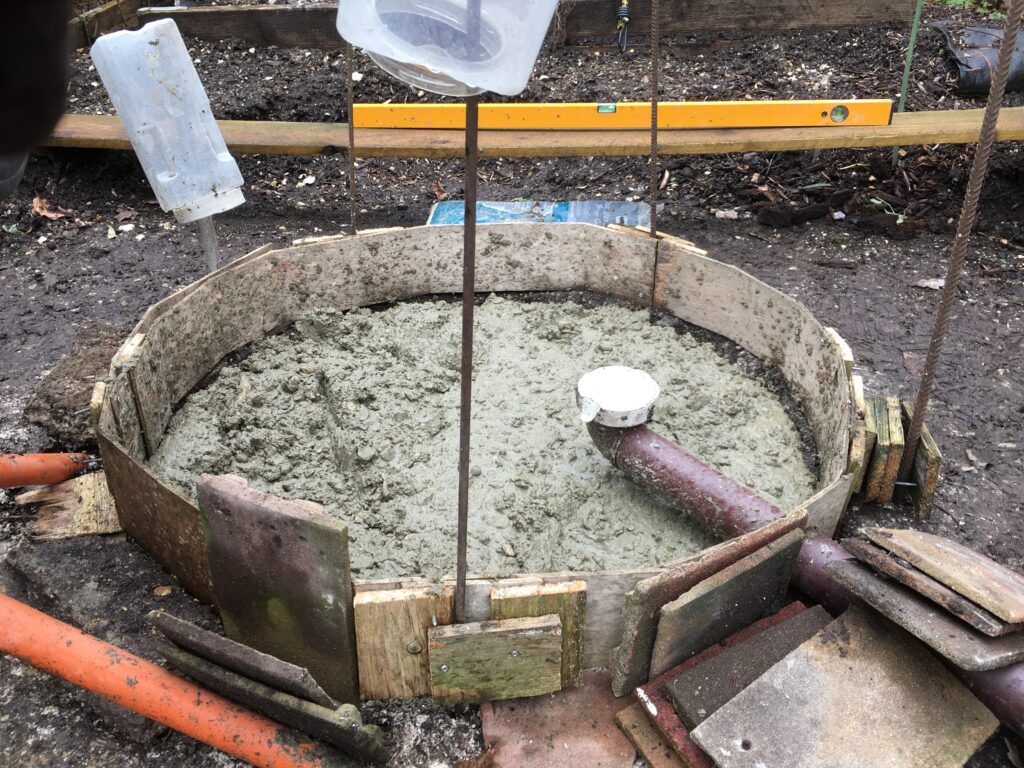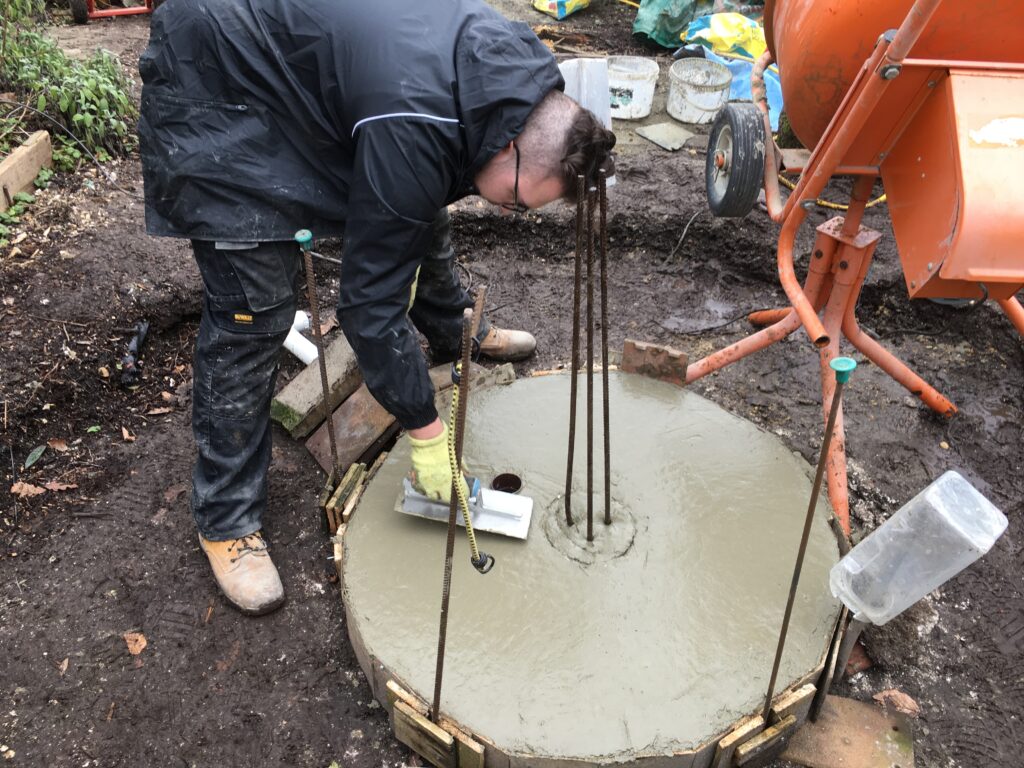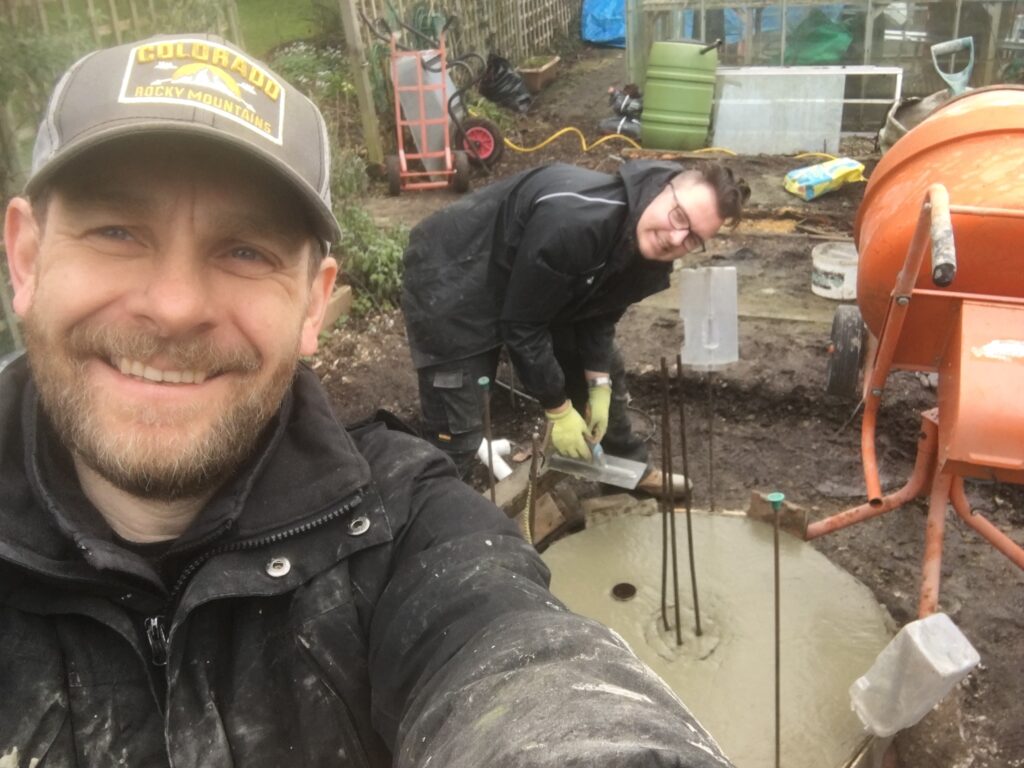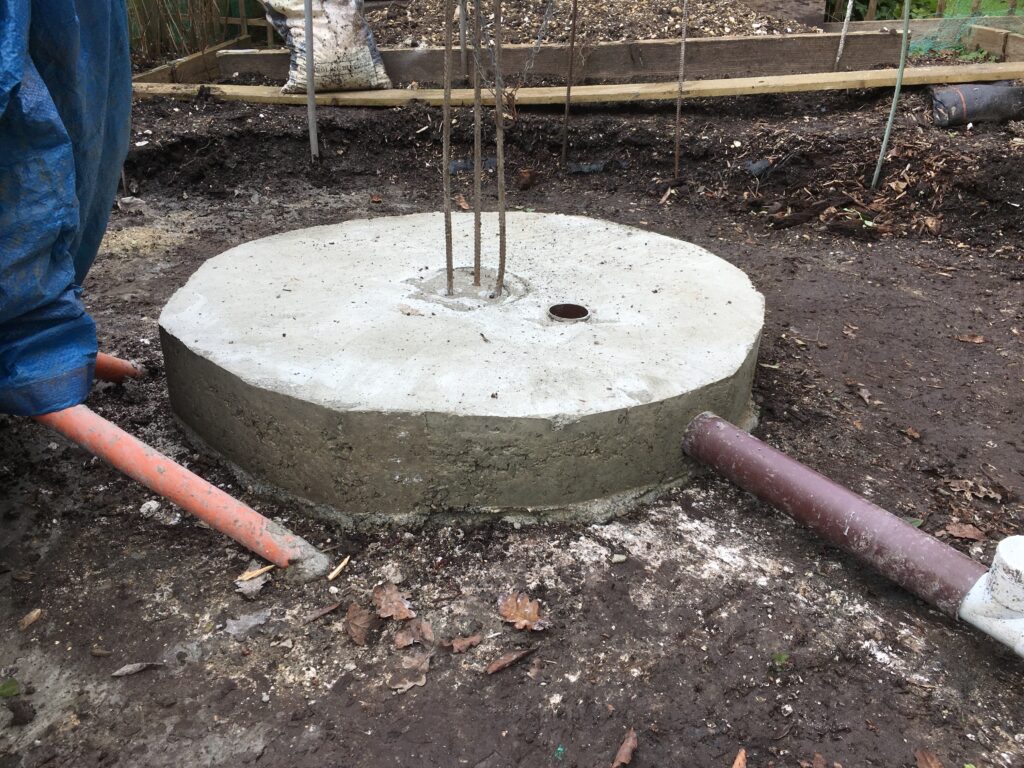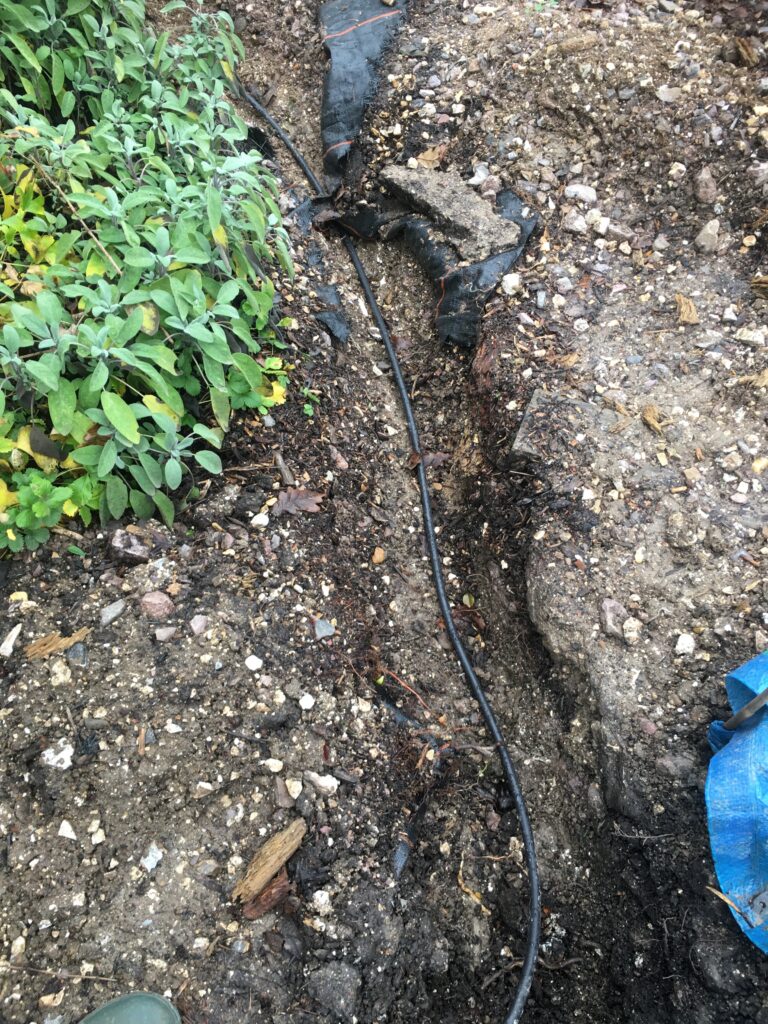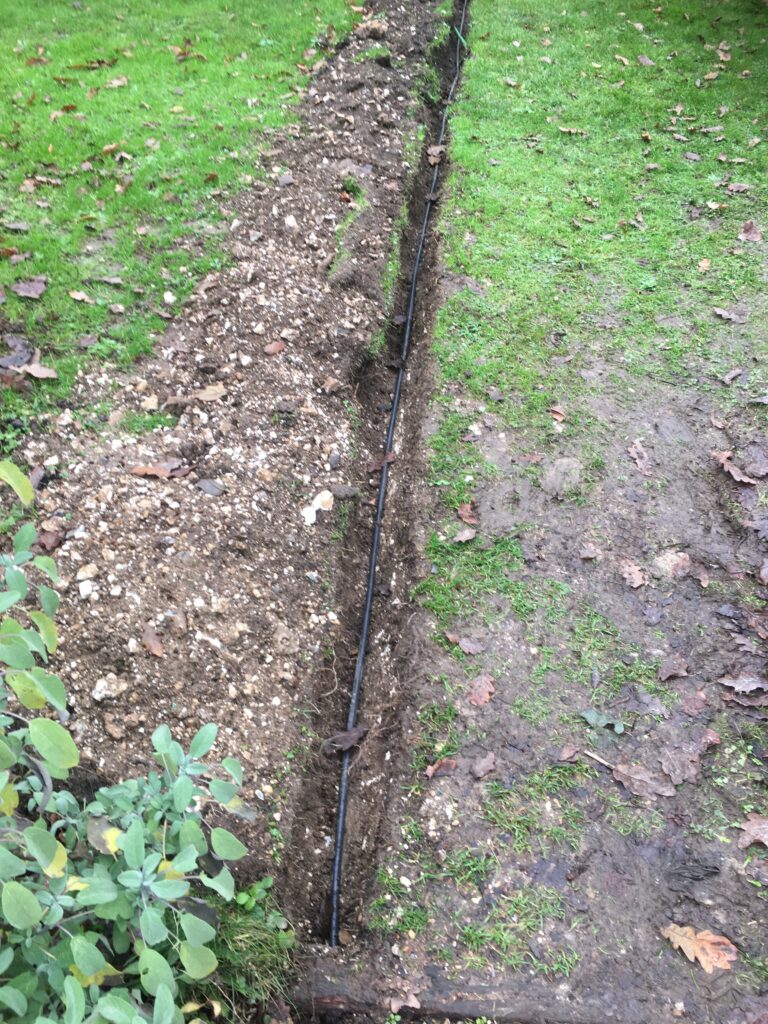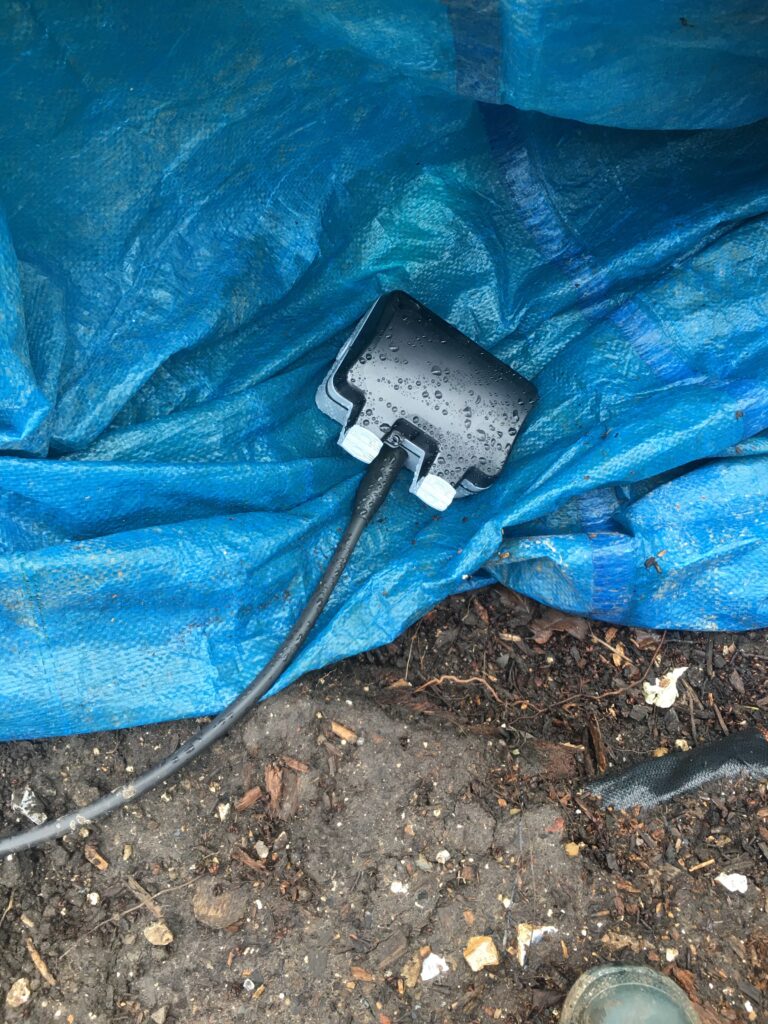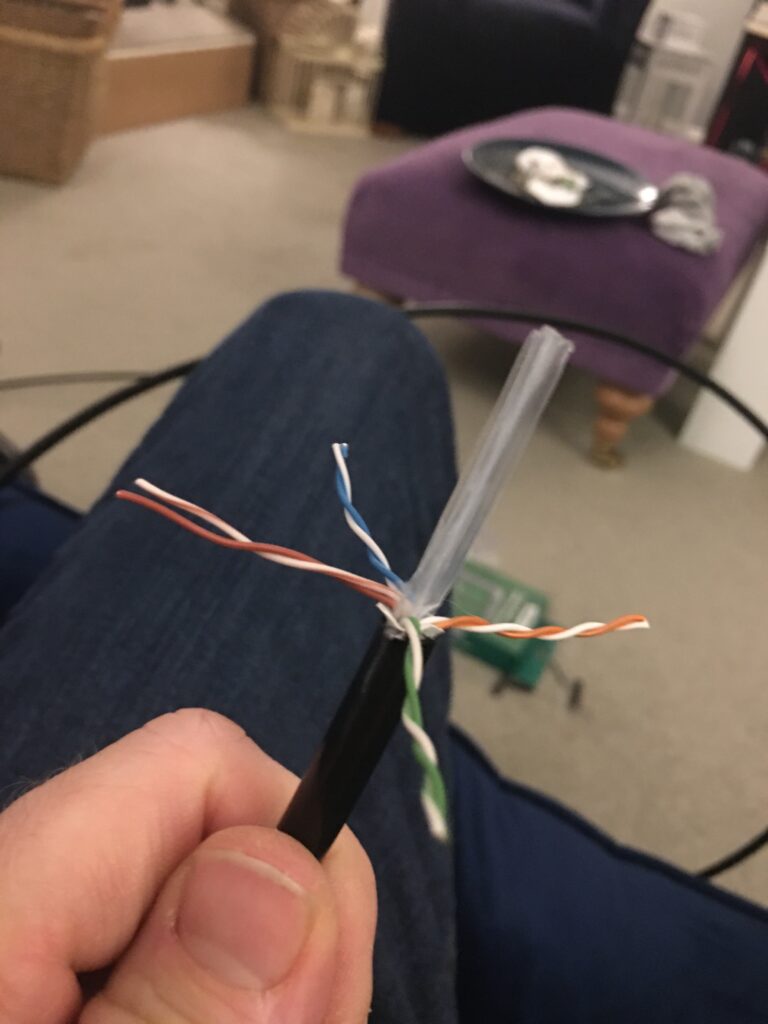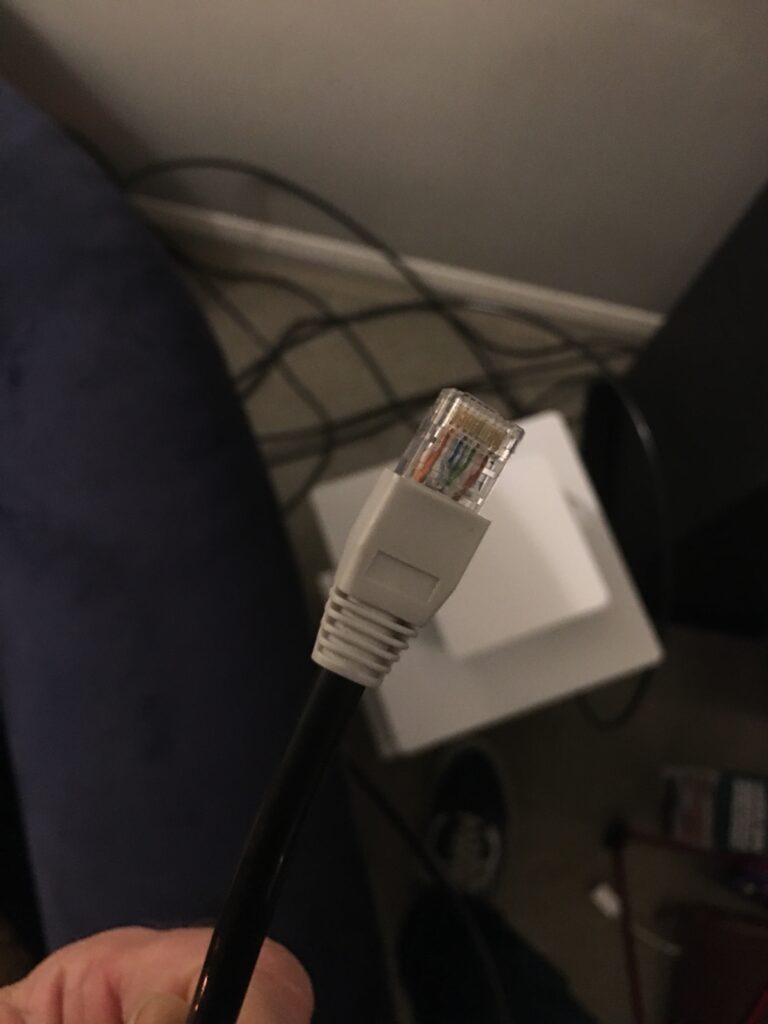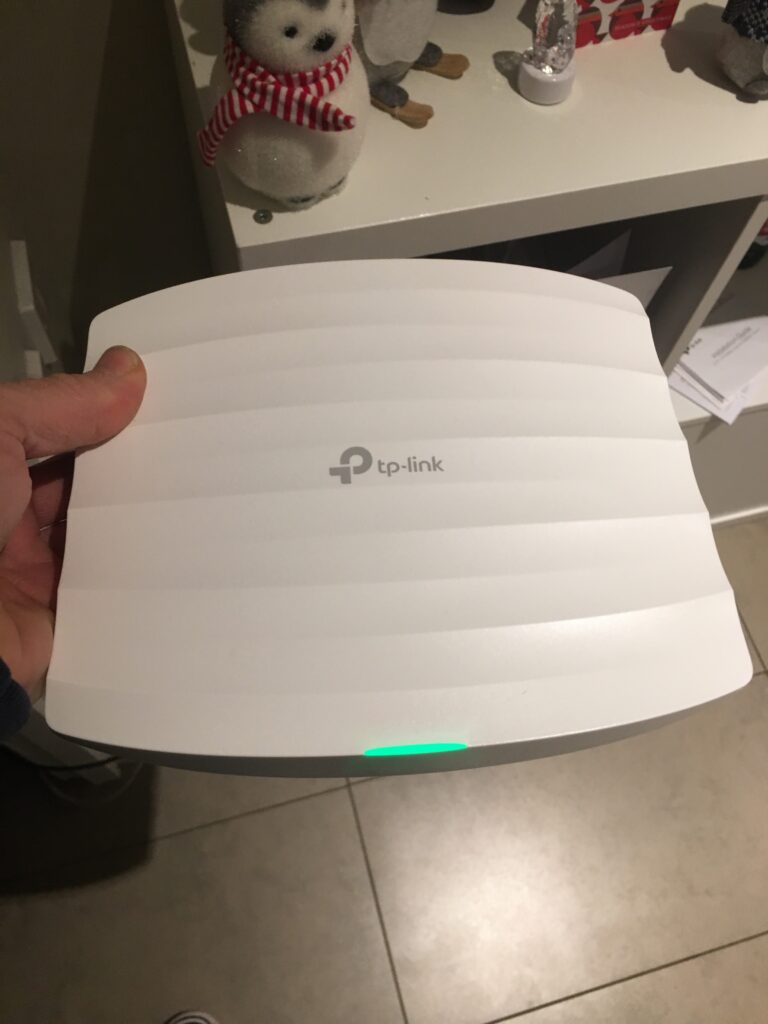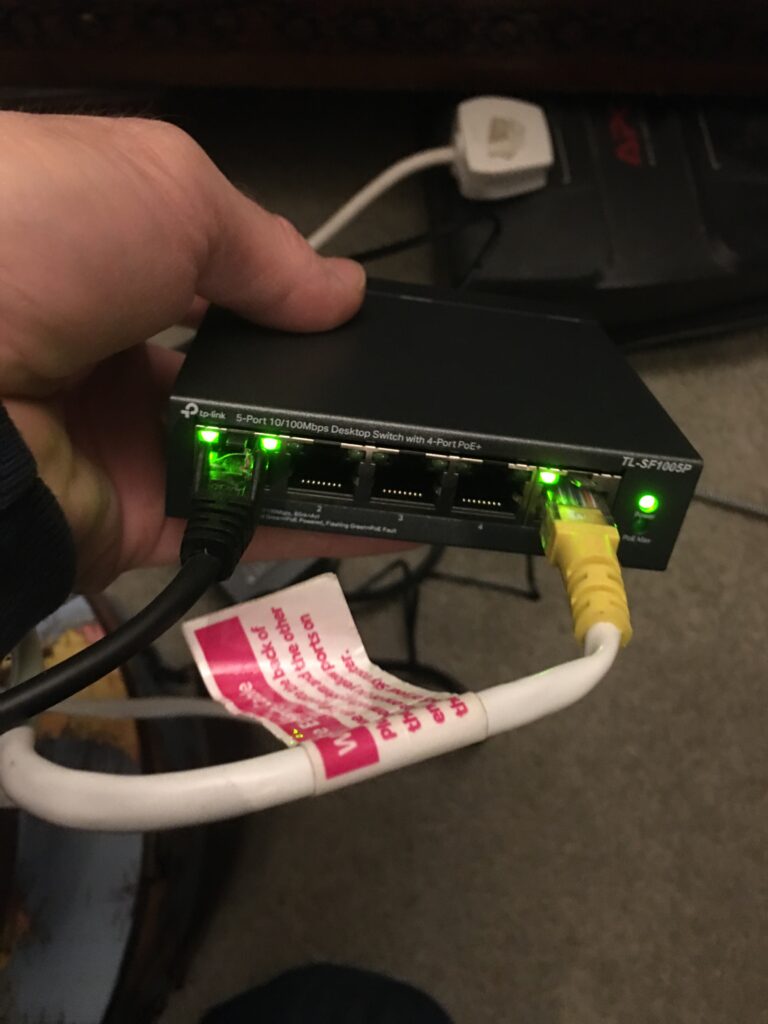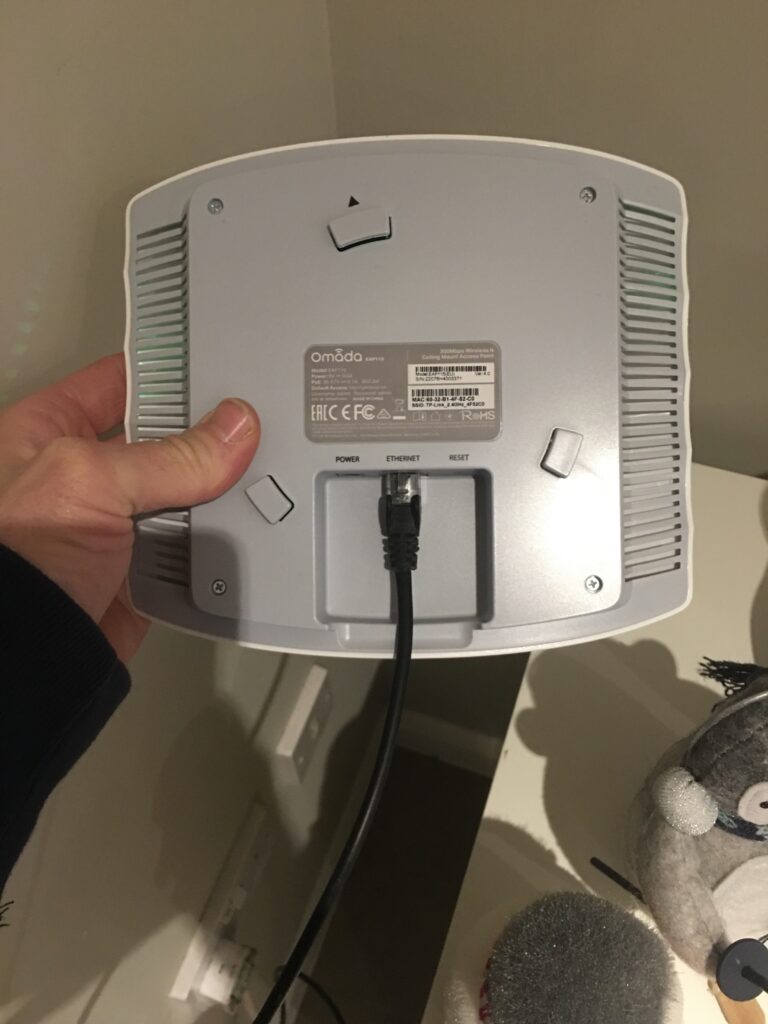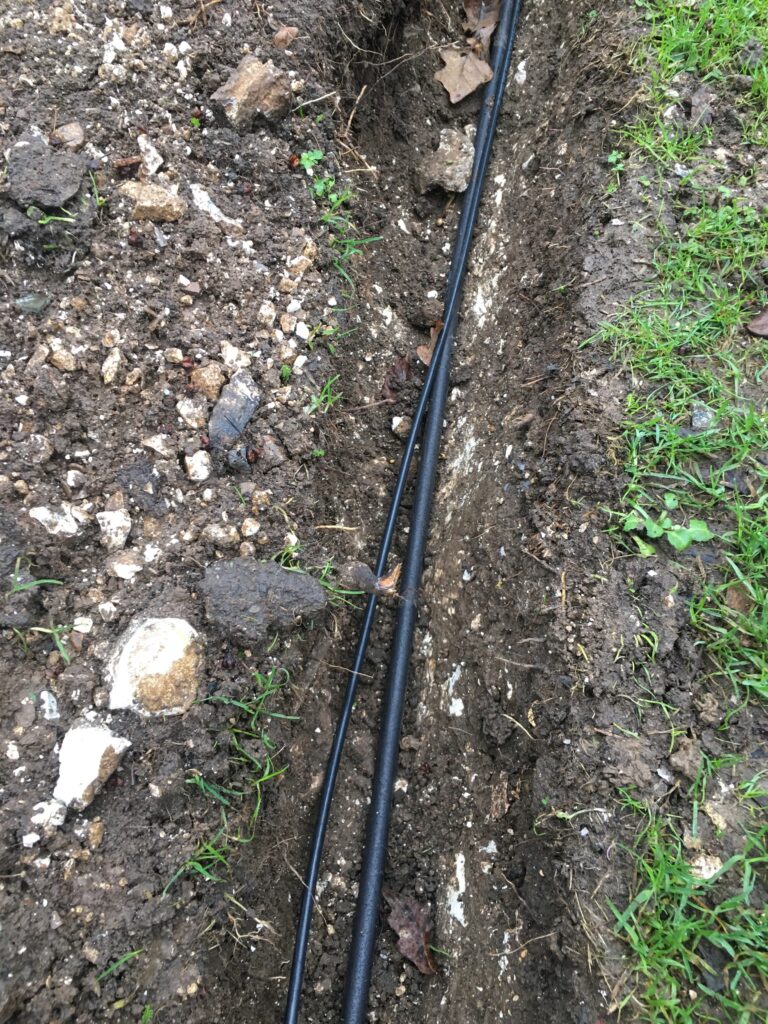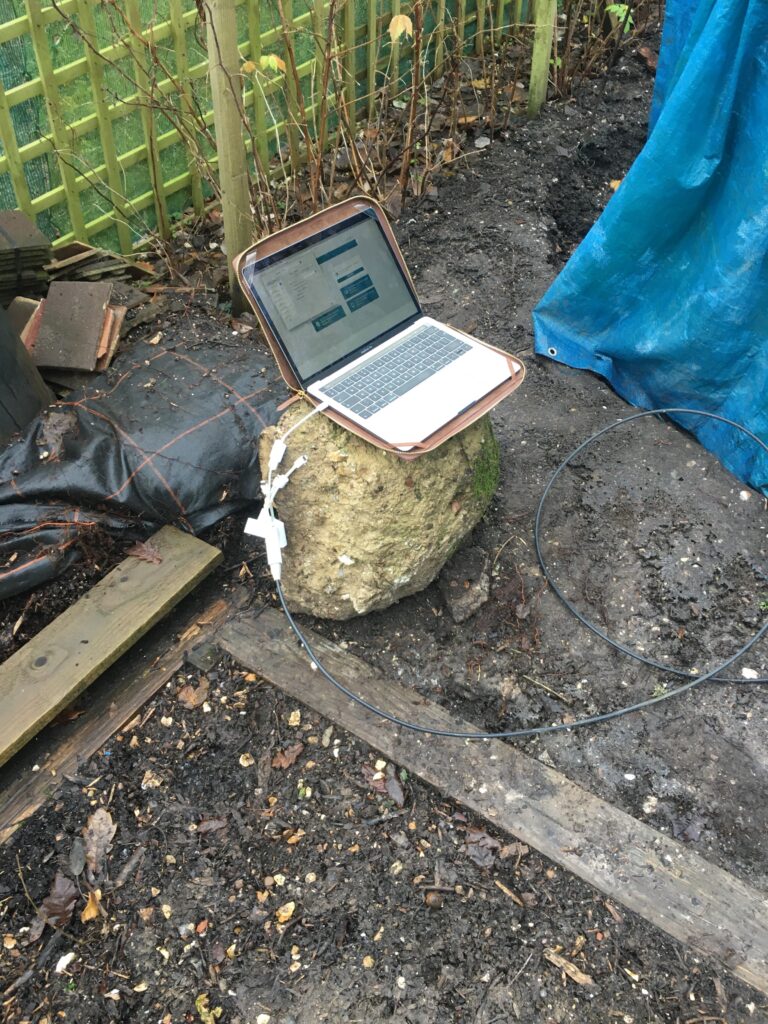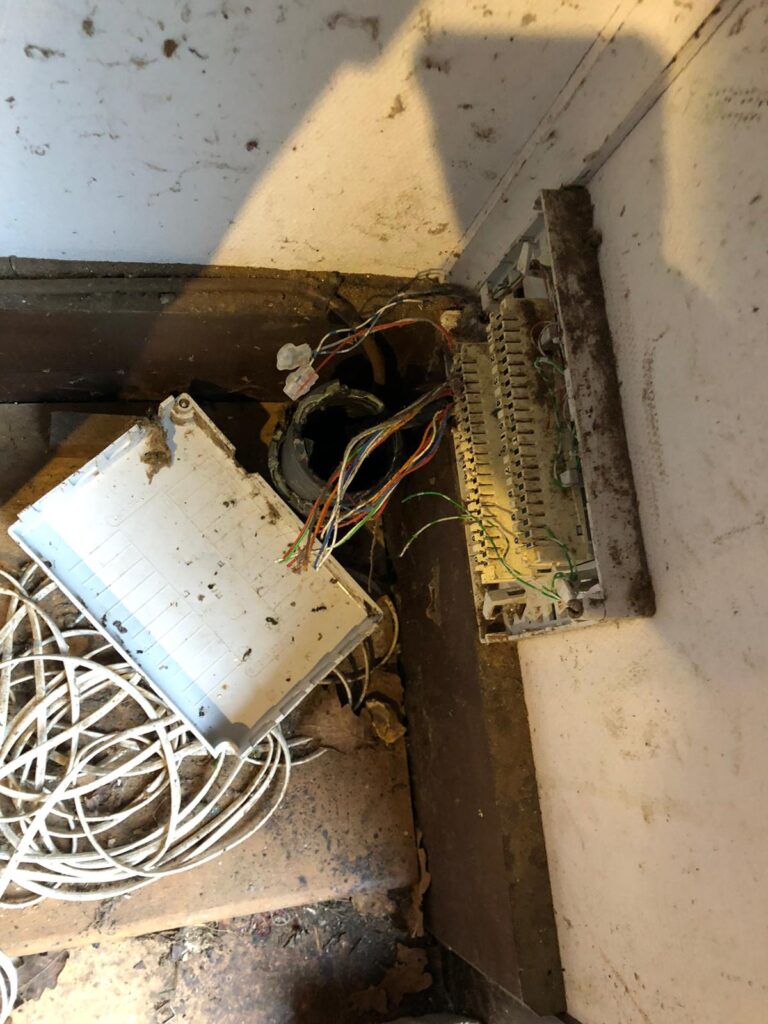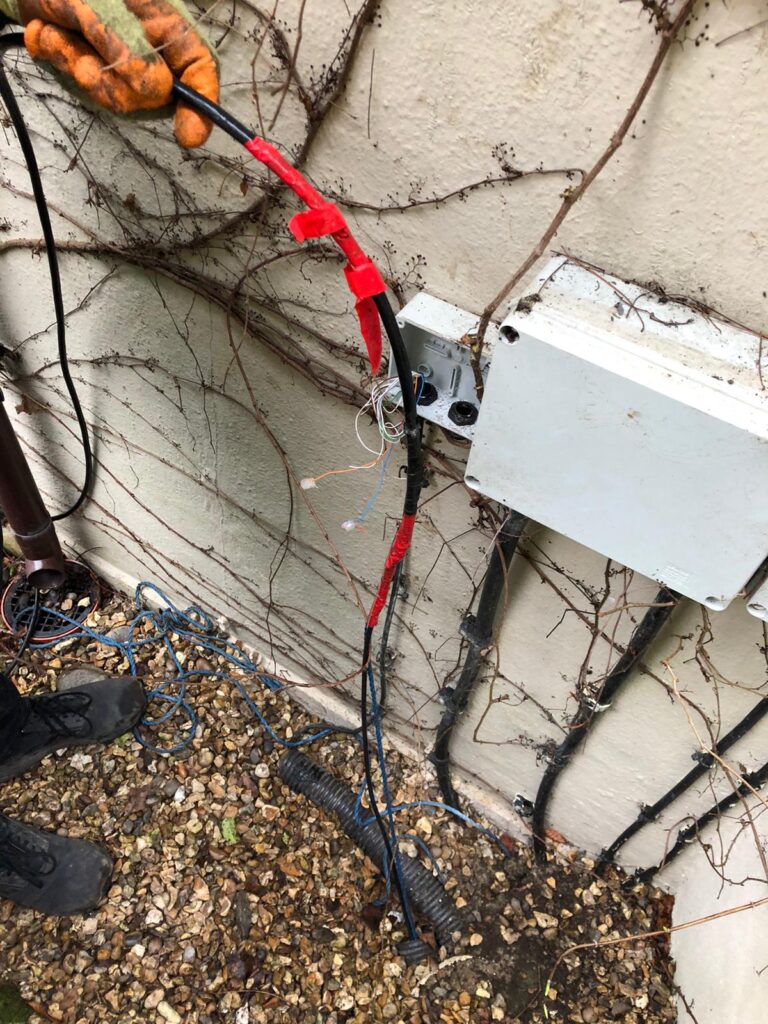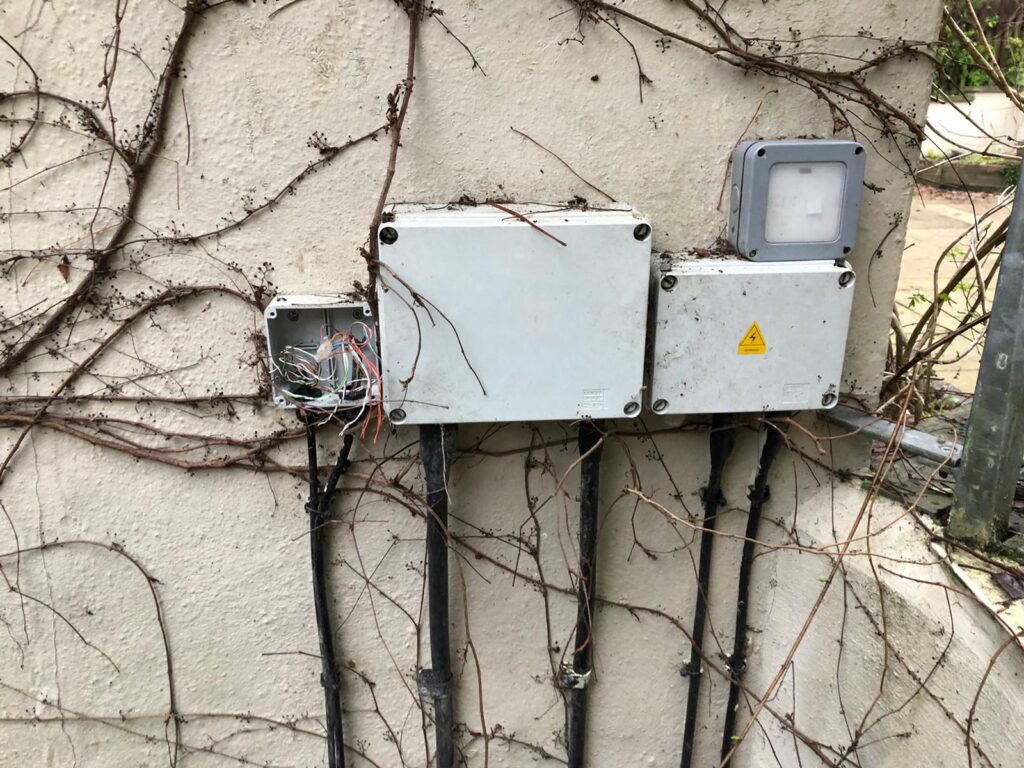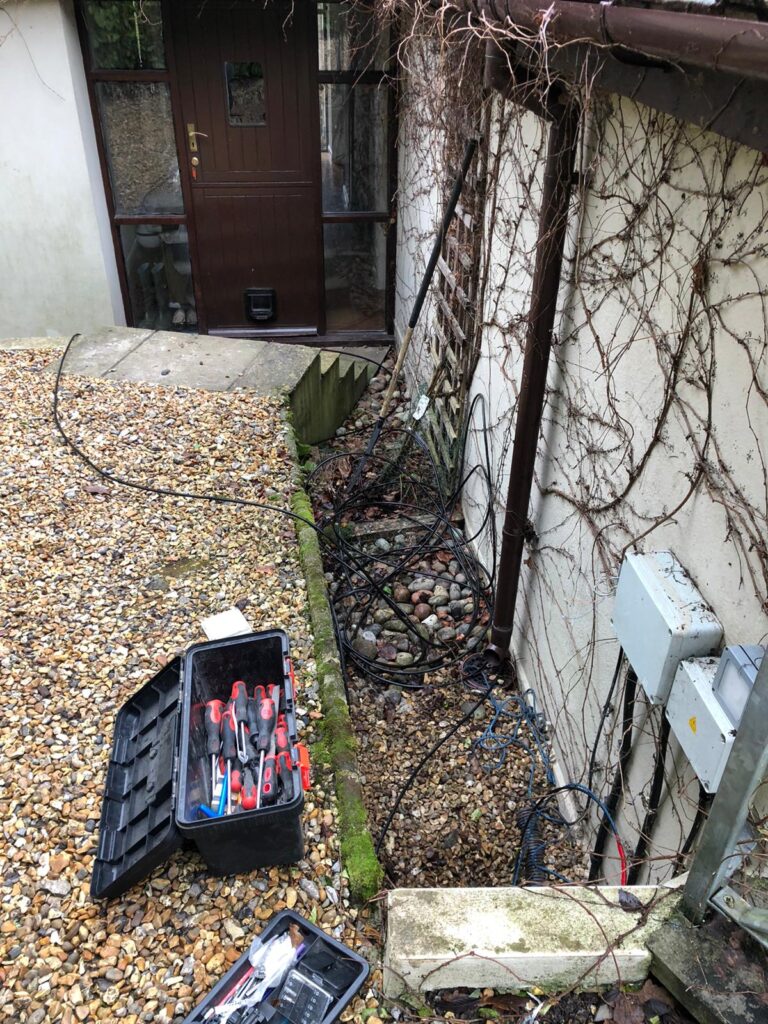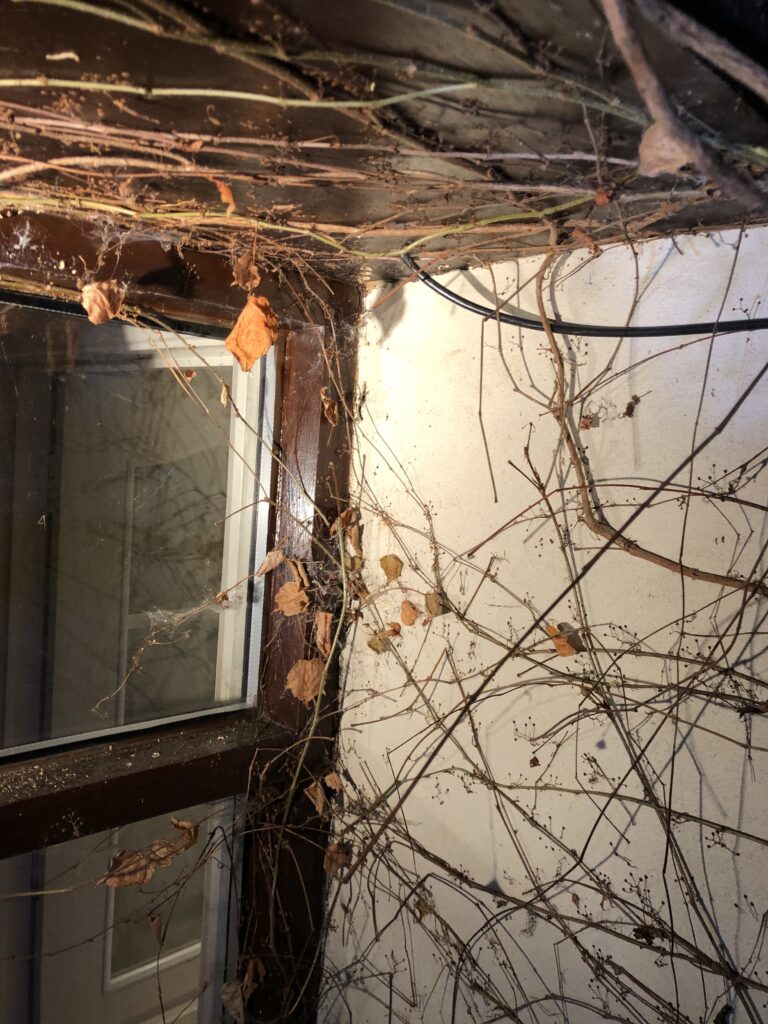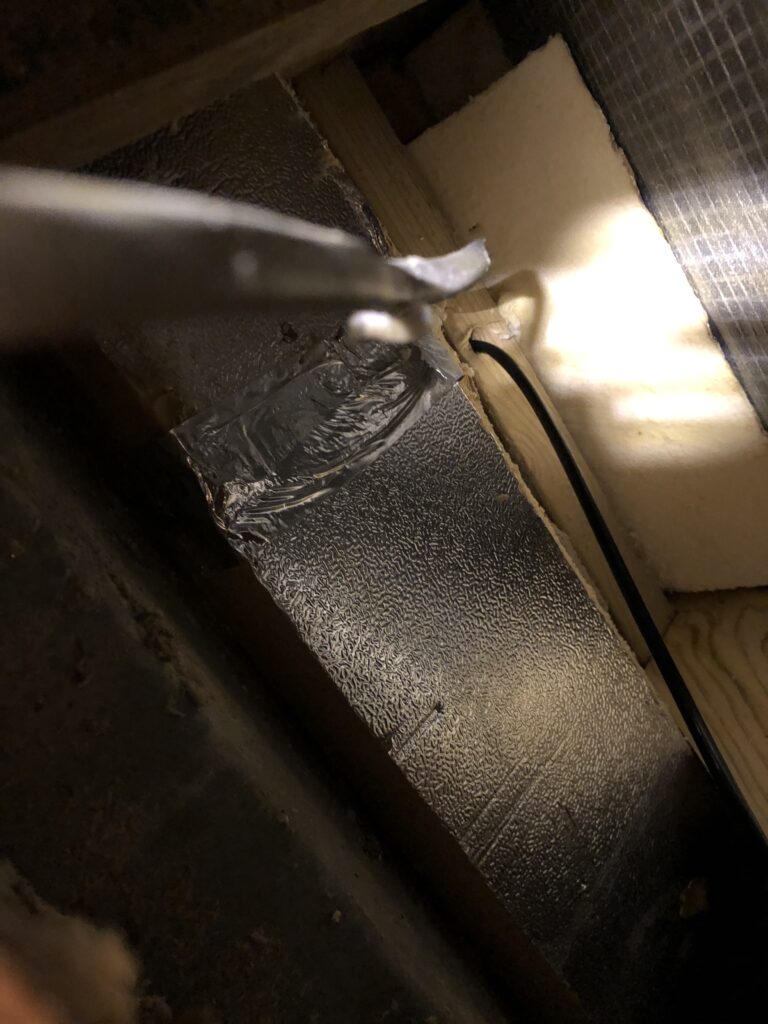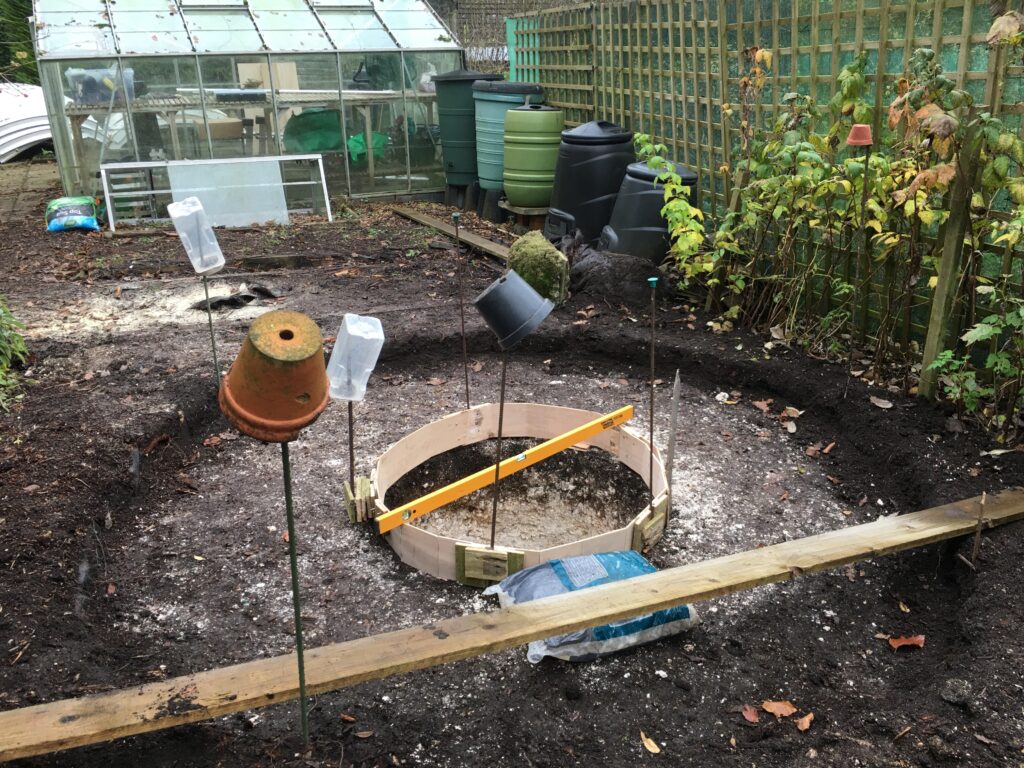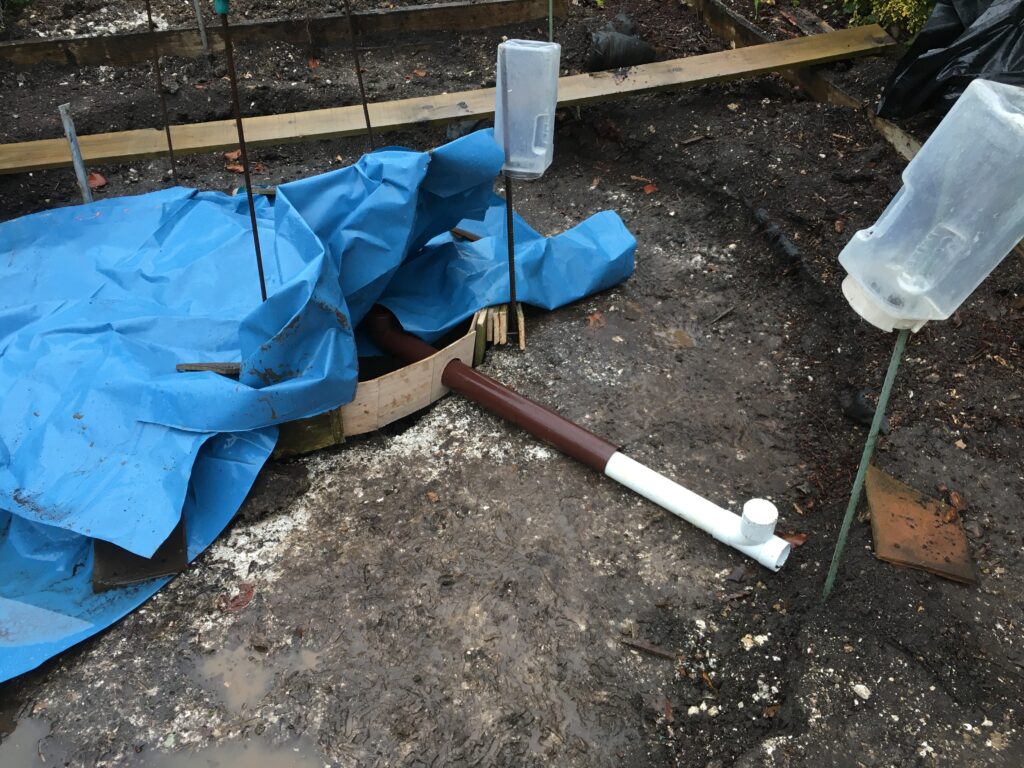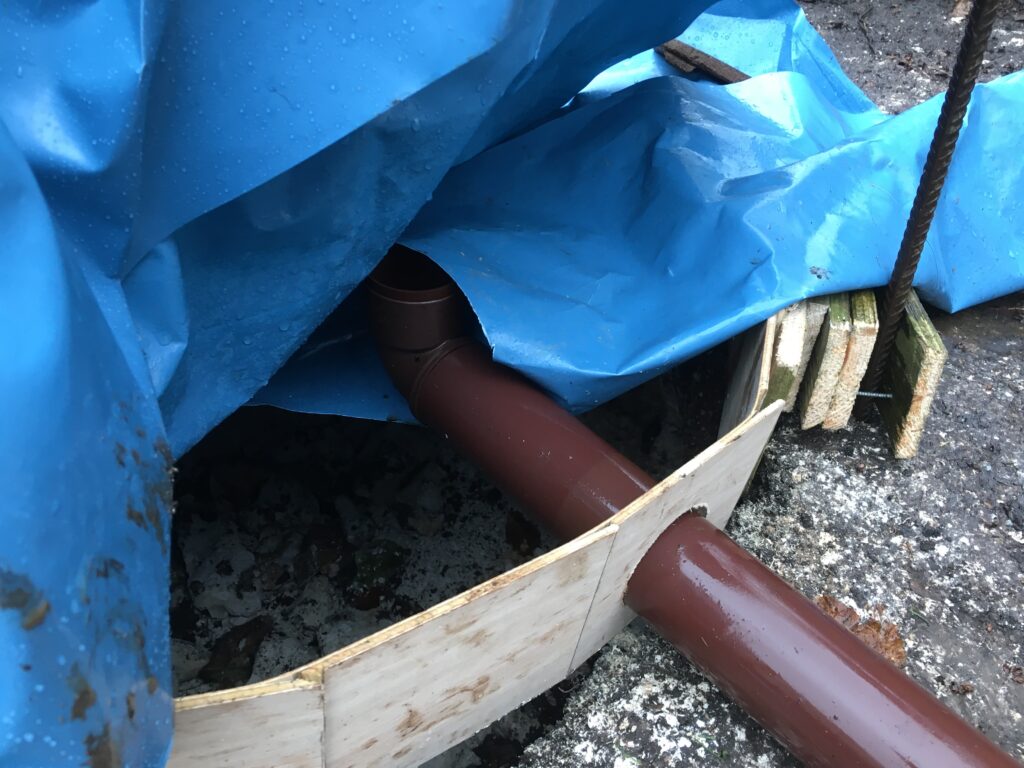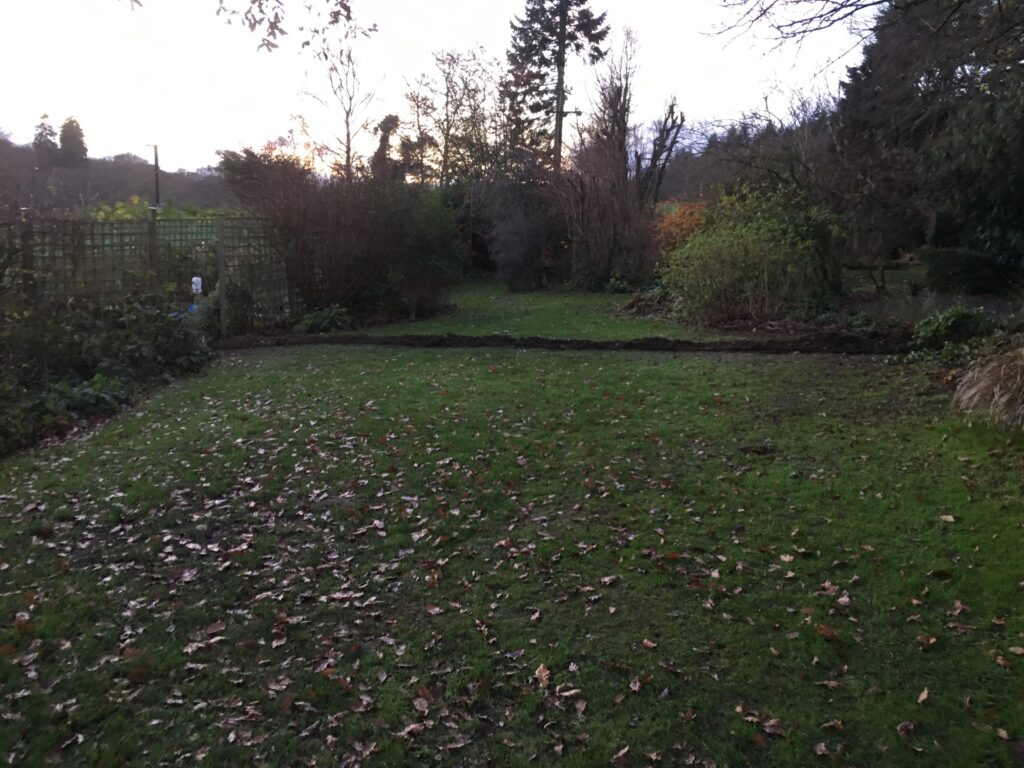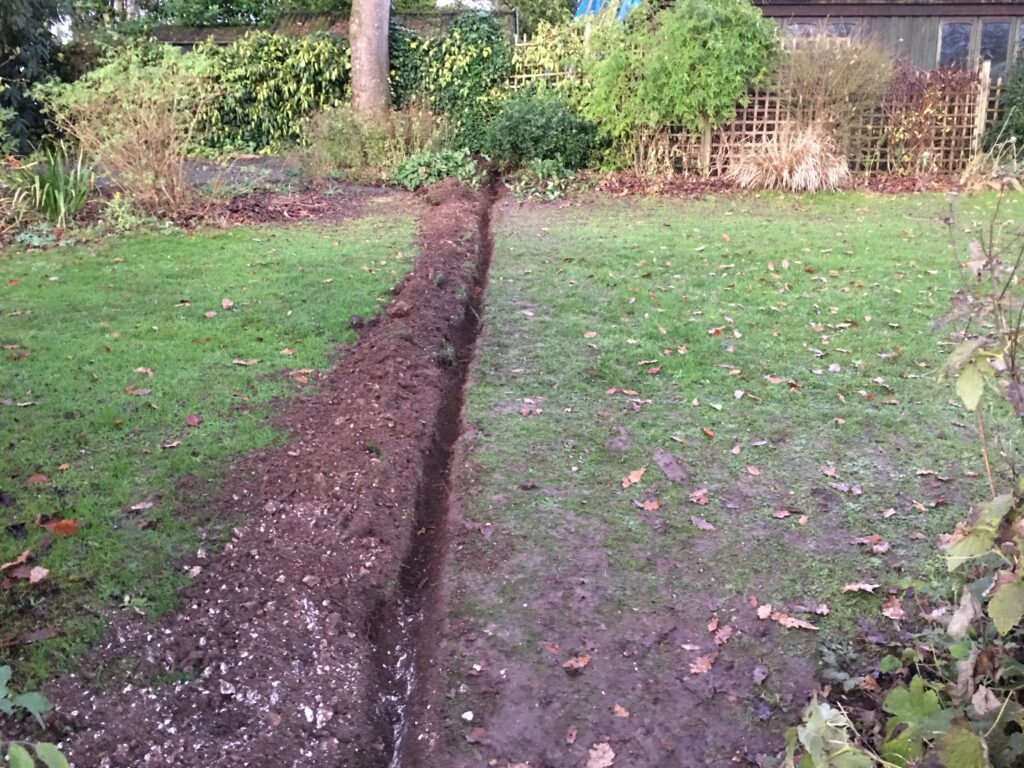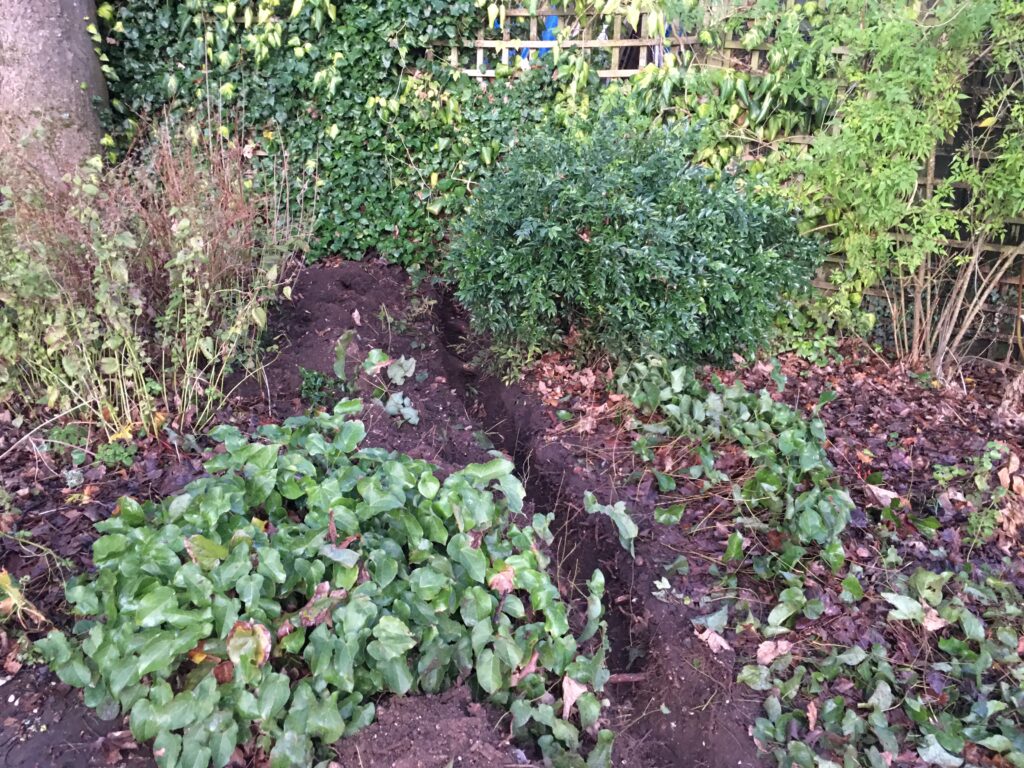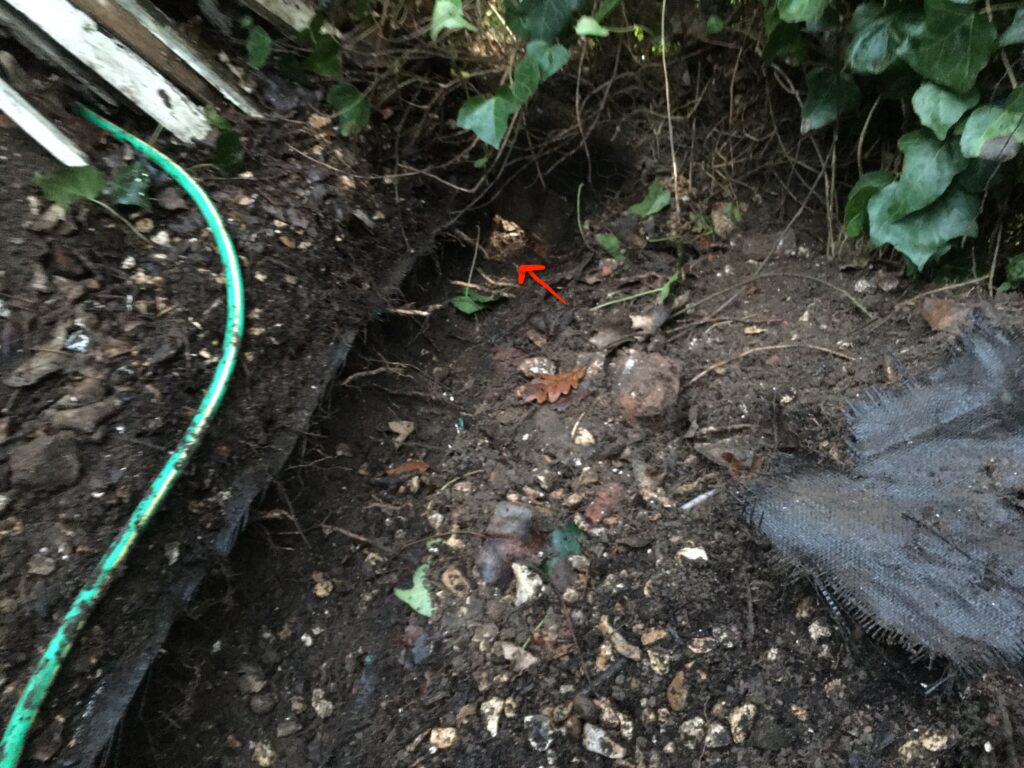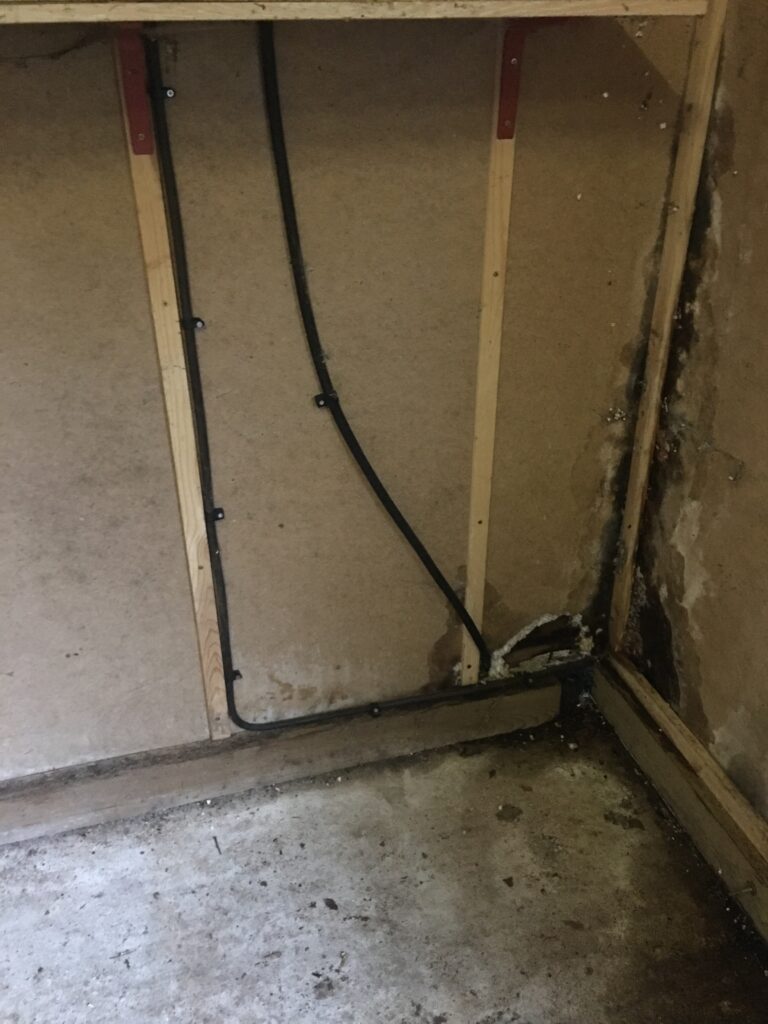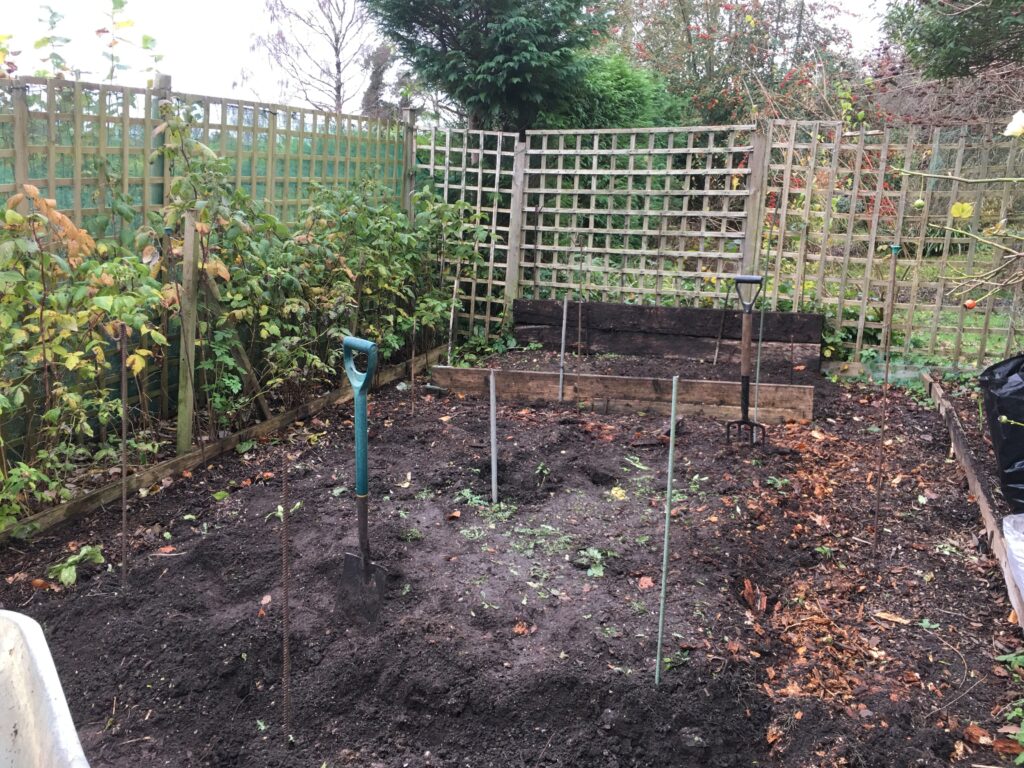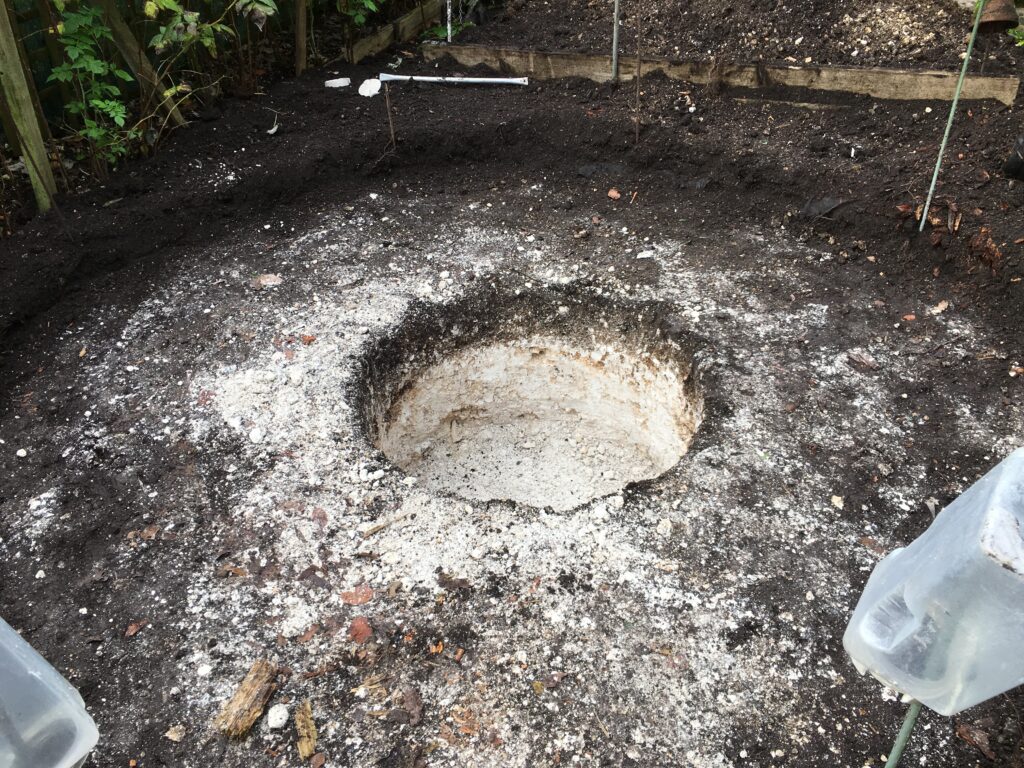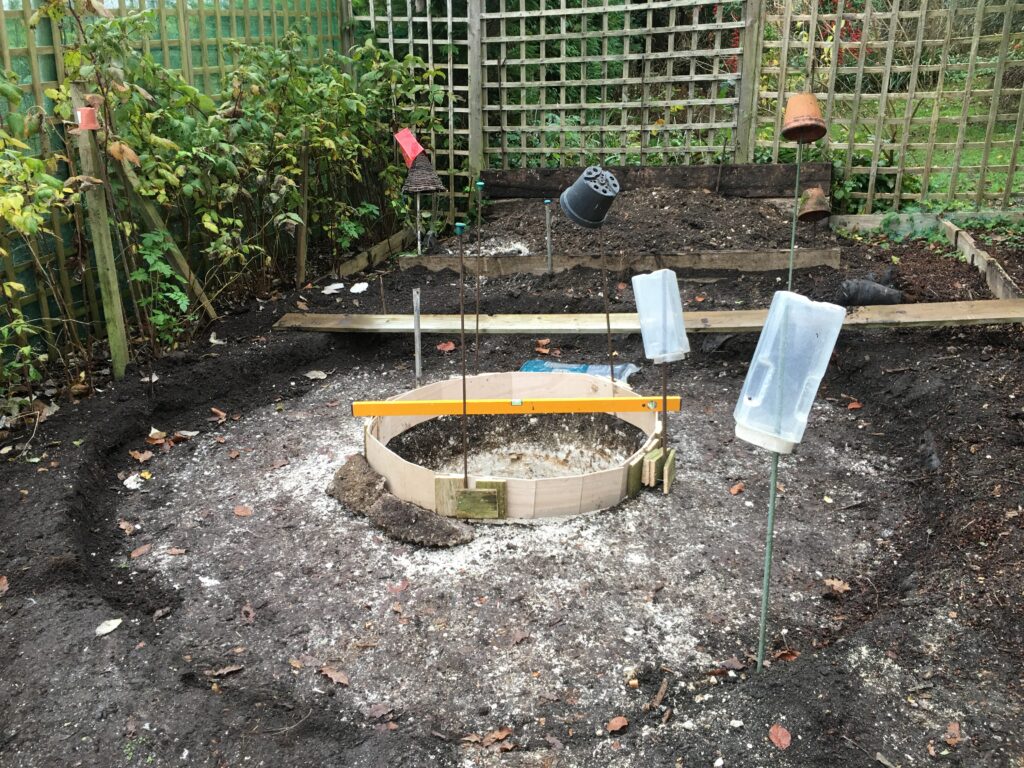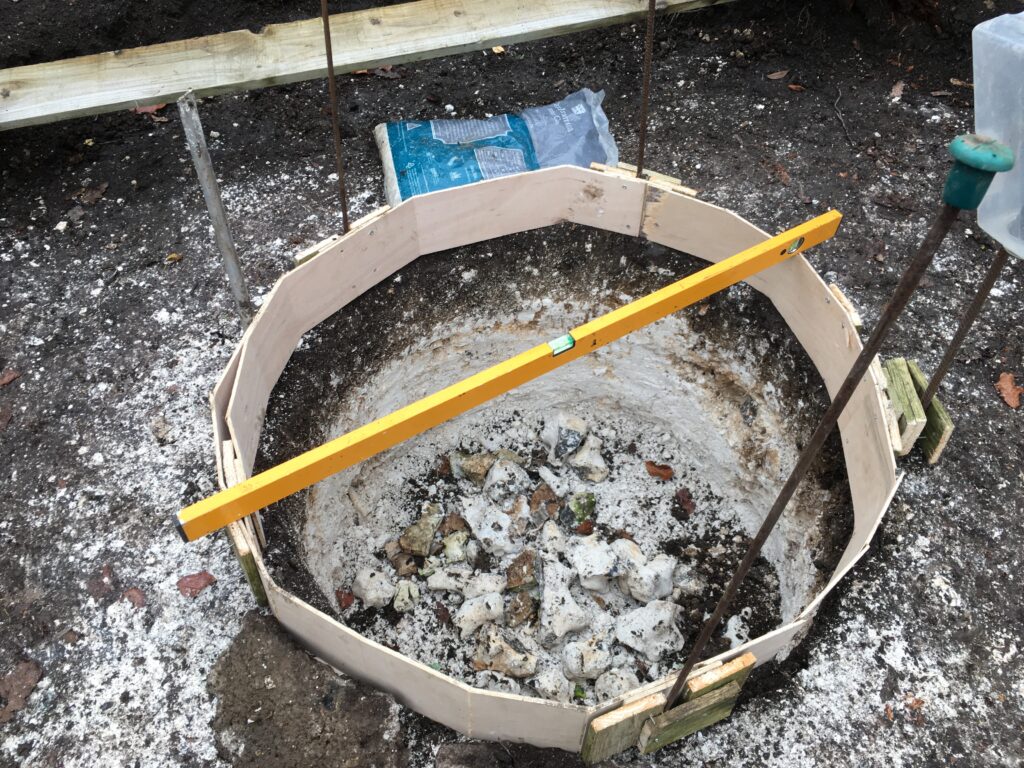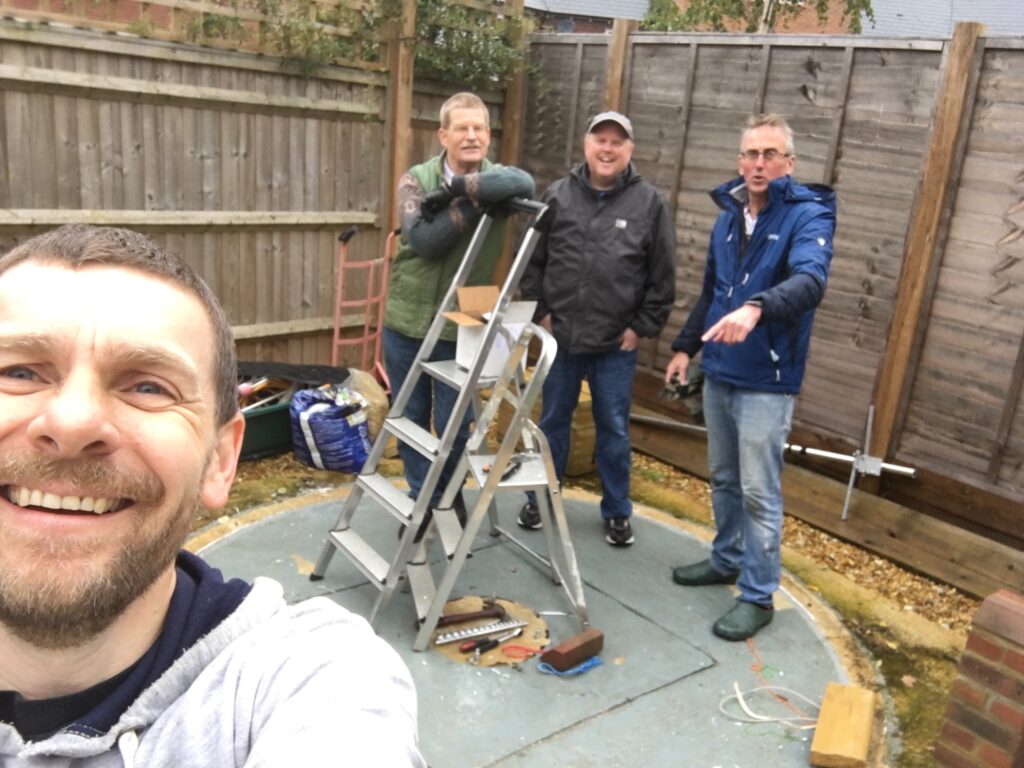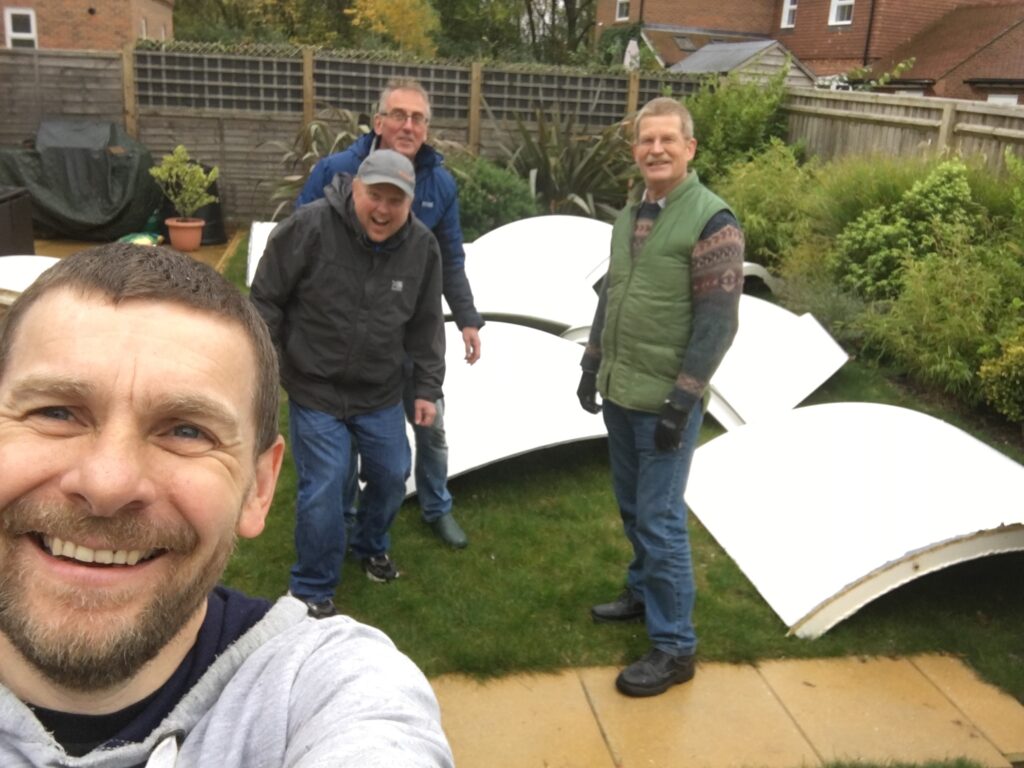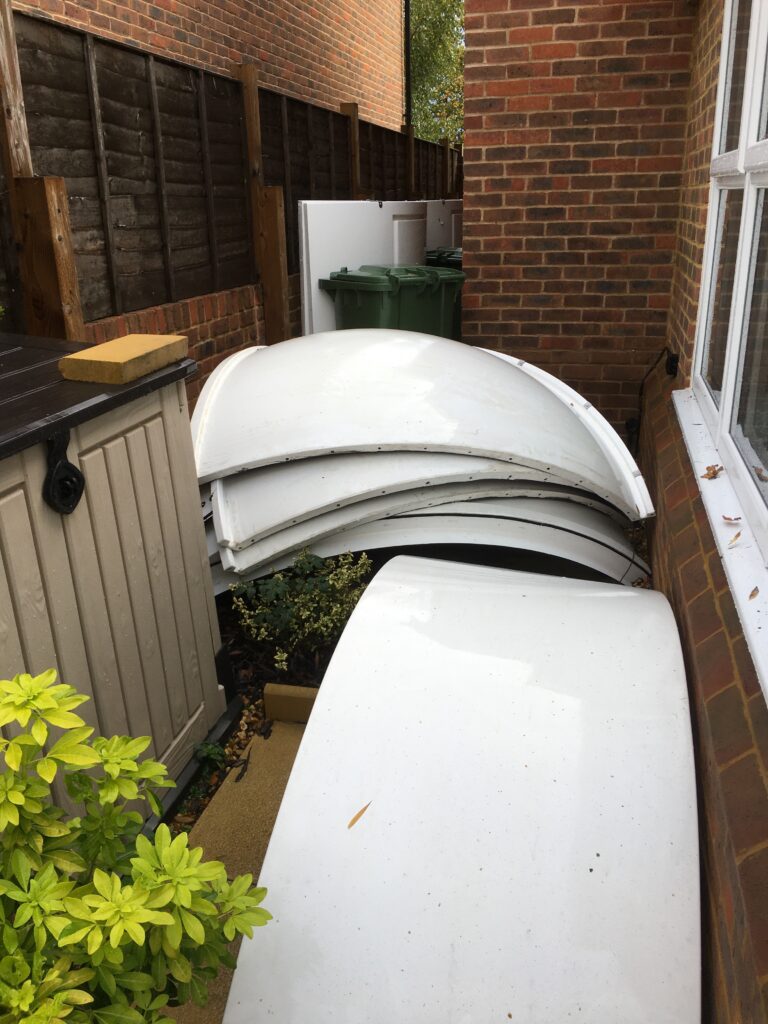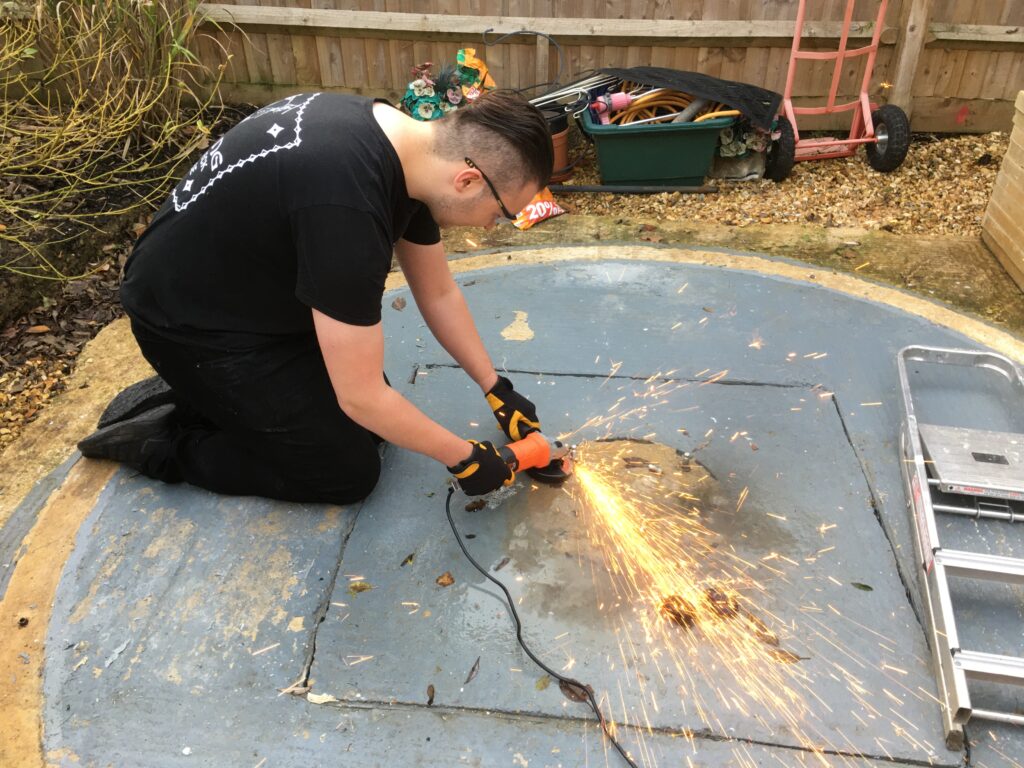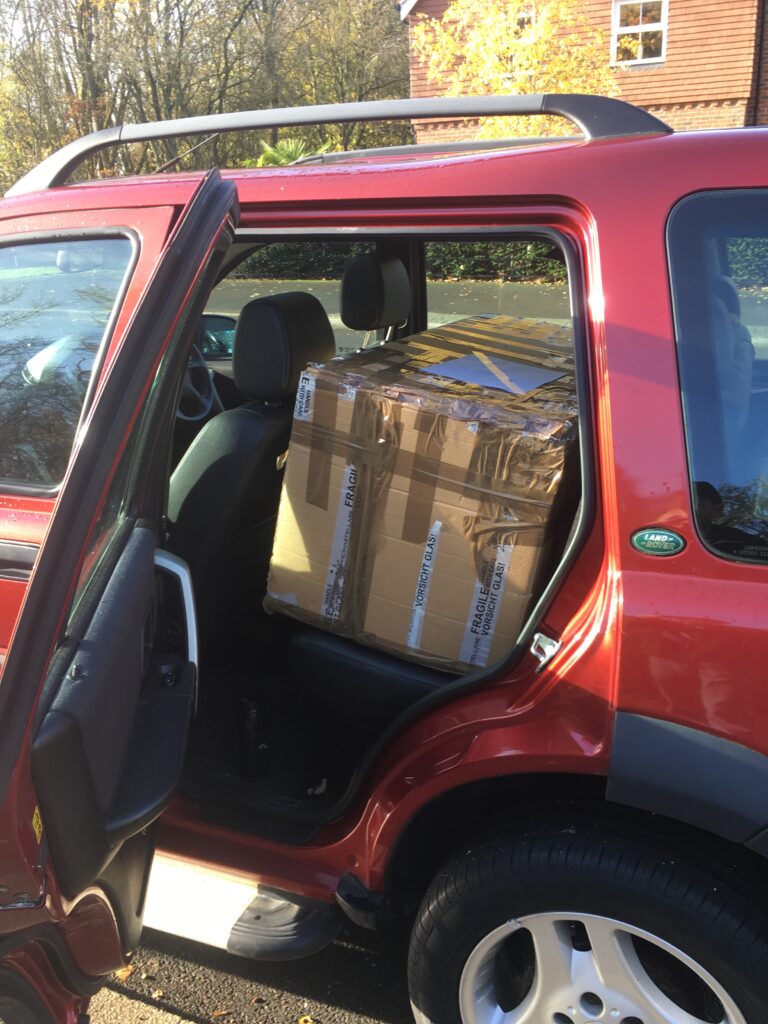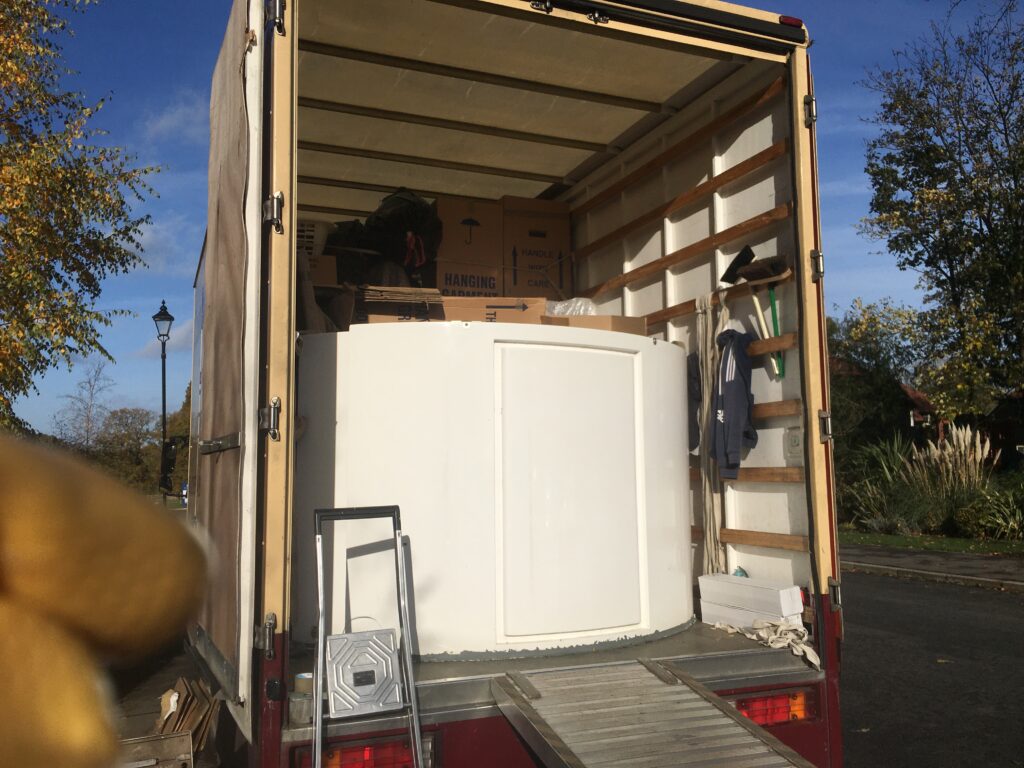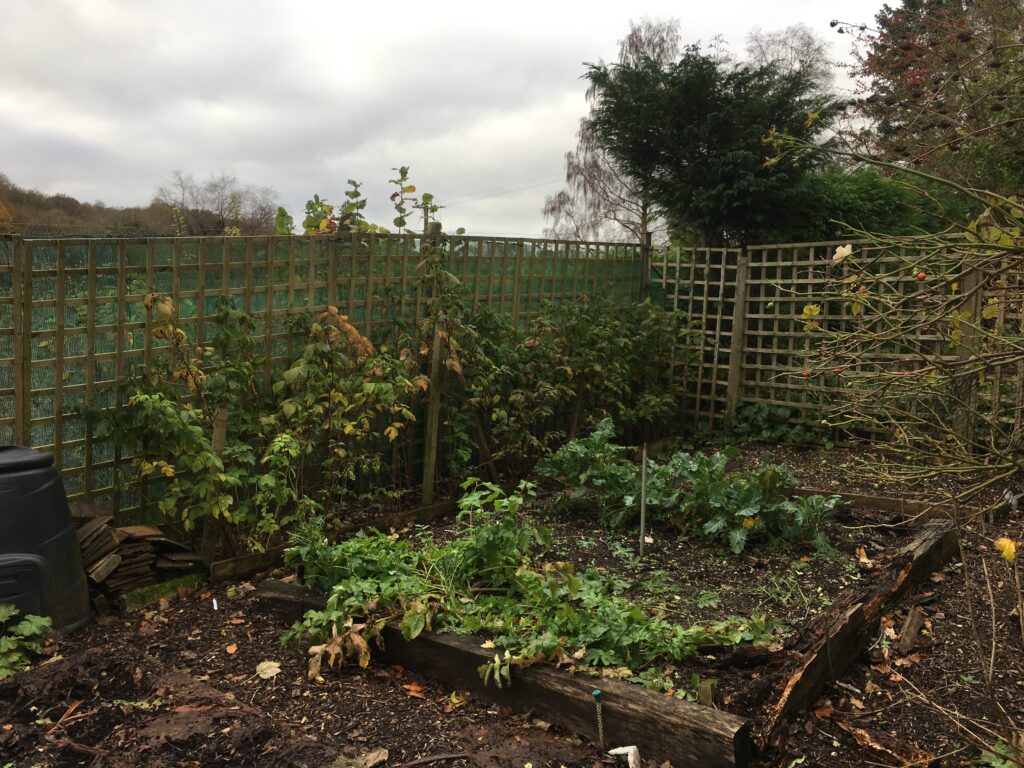13th March 2021
So continuing my writeup of progress on the dome build. With the pier block complete, now it was time to make the former for the base and start the concreting. The former was made from 5mm ply that I purchased from Homebase as they cut large sheets on site which is very hand for transport. When home I then cut the material further and then secured the strips together with some scrap wood I found.
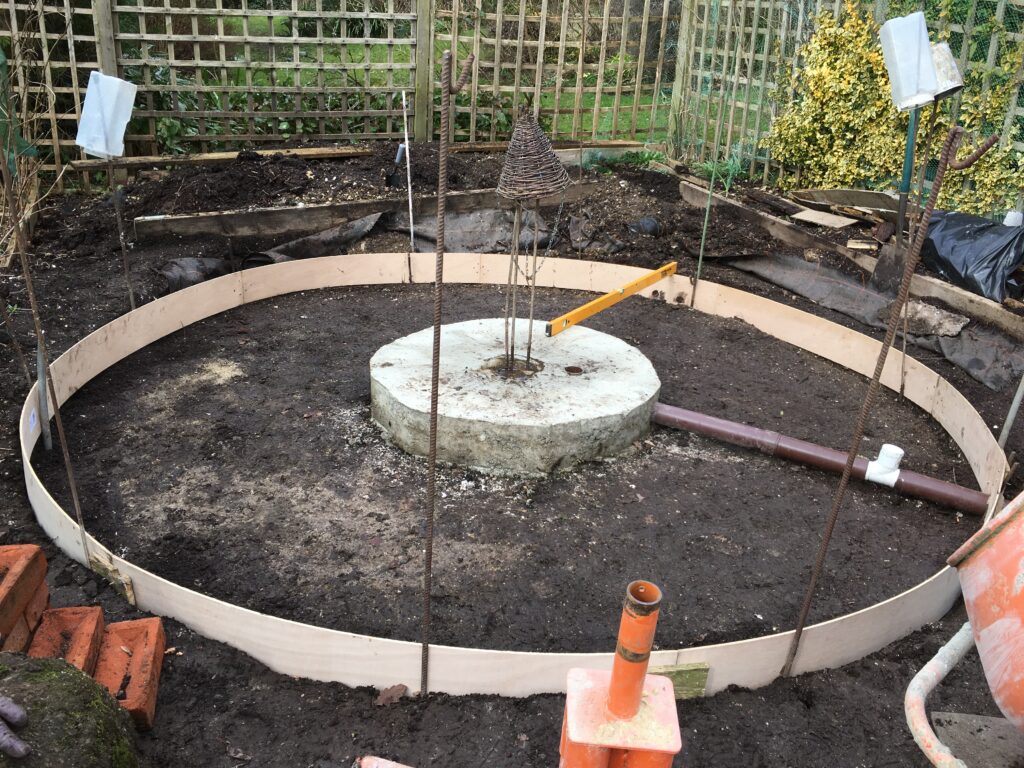
With some rebar stakes found in the flow borders I kept the wood former in place. Again I cut a hole in the wood seen to the right of the photo above for the electrical pipe. The height of the block above the ground can be clearly seen.
With the ability to meet 1 person outside, one of my friends came over to help. I had already prepared some days earlier the wood former which was looking good. I noticed that to get the depth required the height of the observatory base to the North was significantly less than to the South due to the slope of my land. So I needed more ballast.
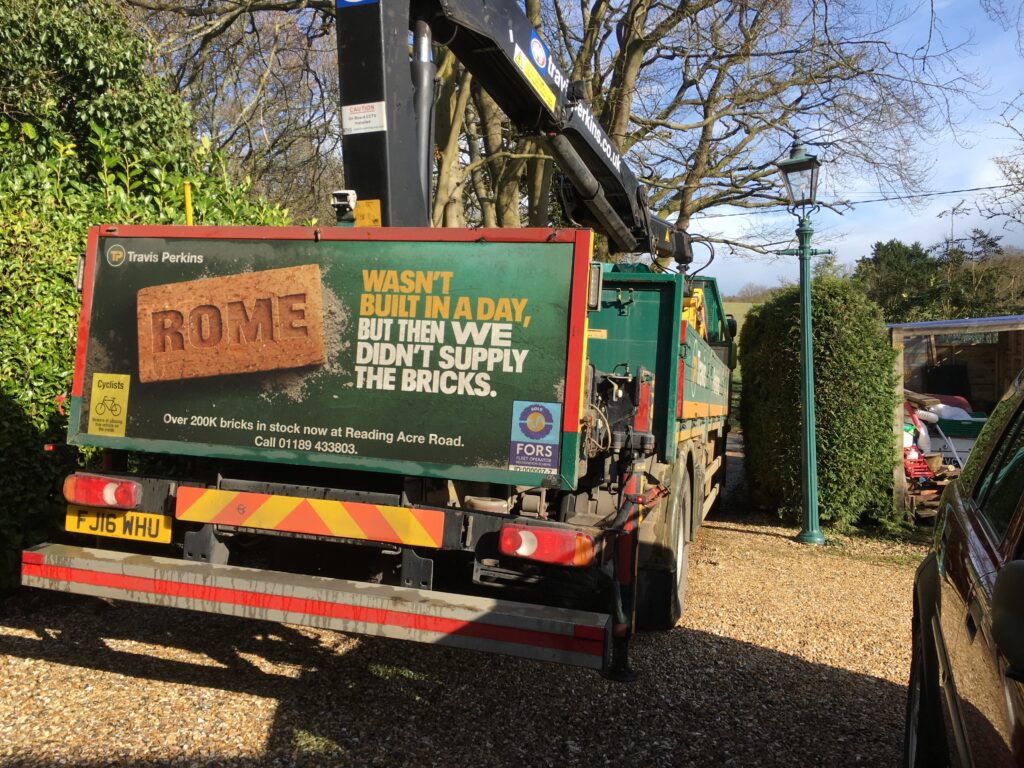
Travis Perkins was the cheapest for ballast locally and had delivered before. The driveway is rather tight at the property, however the drive did his usual finesse and reversed up first time. He then set about manipulating the fantastically well engineered crane are to move the bag to the rear of the vehicle without hitting my lamppost 🙂 Well done Mr TP Driver.
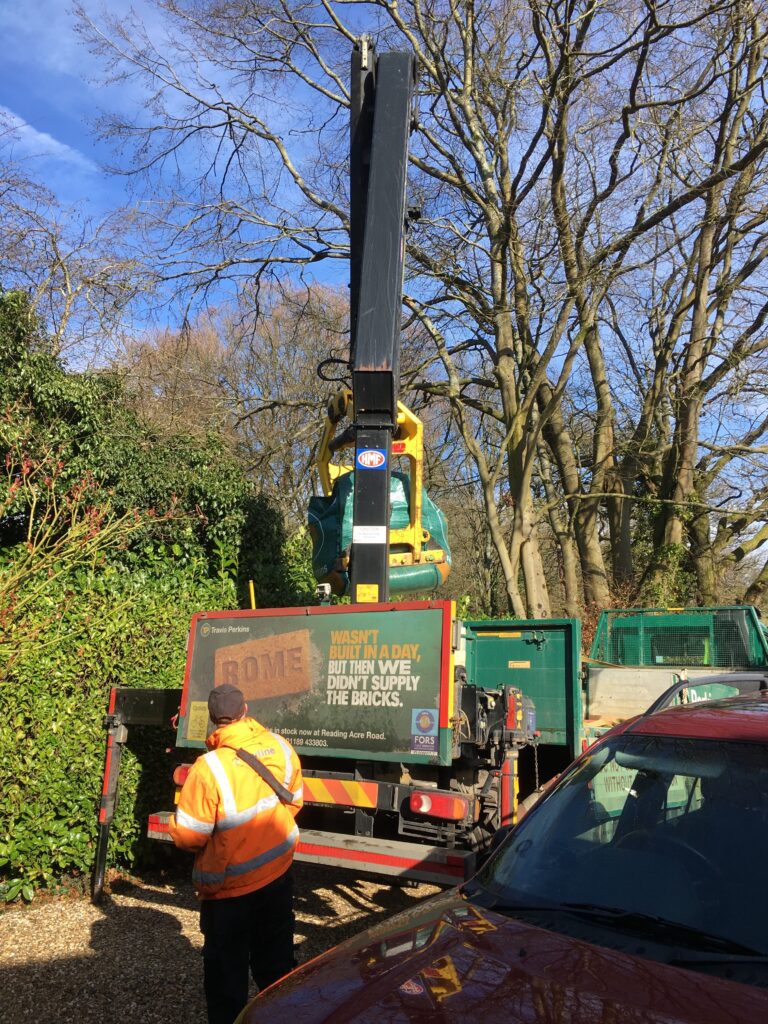
In hindsight I should have made the overall depth much less including that of the pier. I could drive a car on the base or build a house it was so thick, This in part was because we decided not to dig any further into the chalk for the pier block and instead have the block higher to make sure it was still thick enough.

Again the level of the wood was checked across the former to the pier block to make sure the level was correct. By 8:40am we had poured our first load and the long process began.
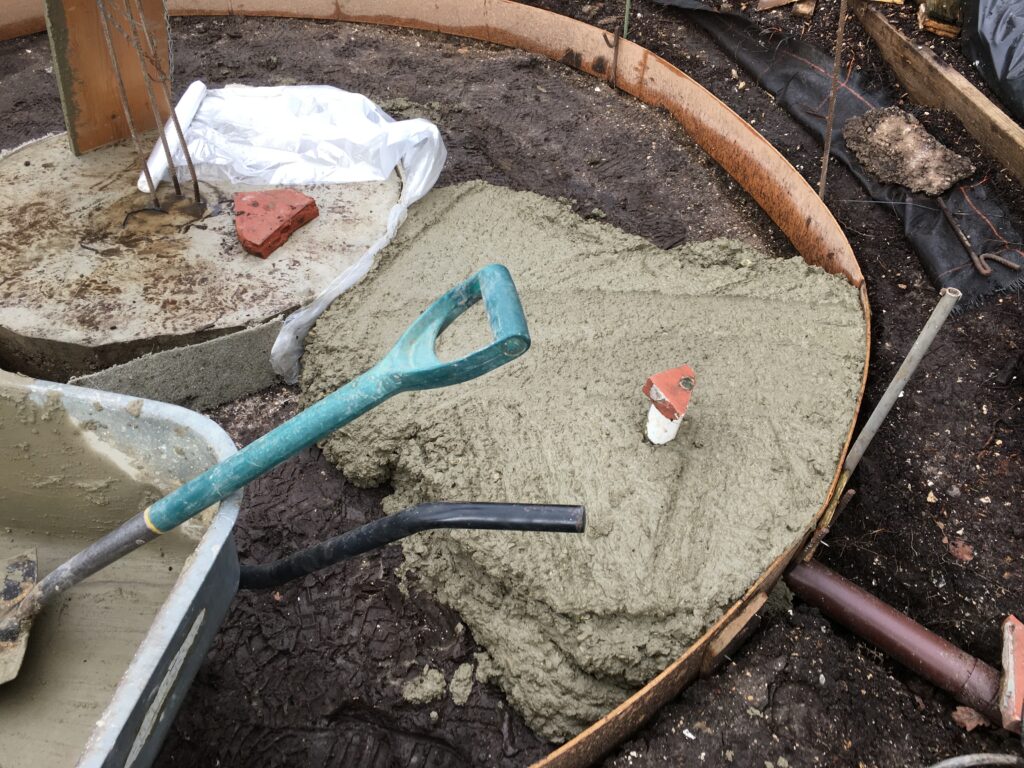
It was clear after around 5 pours that this was going to take some time and a lot of ballast! After 2 hours it was obvious that we did not have enough ballast and the empty bag stopped us progressing any further. It would be another week before we would have another opportunity to complete the base.
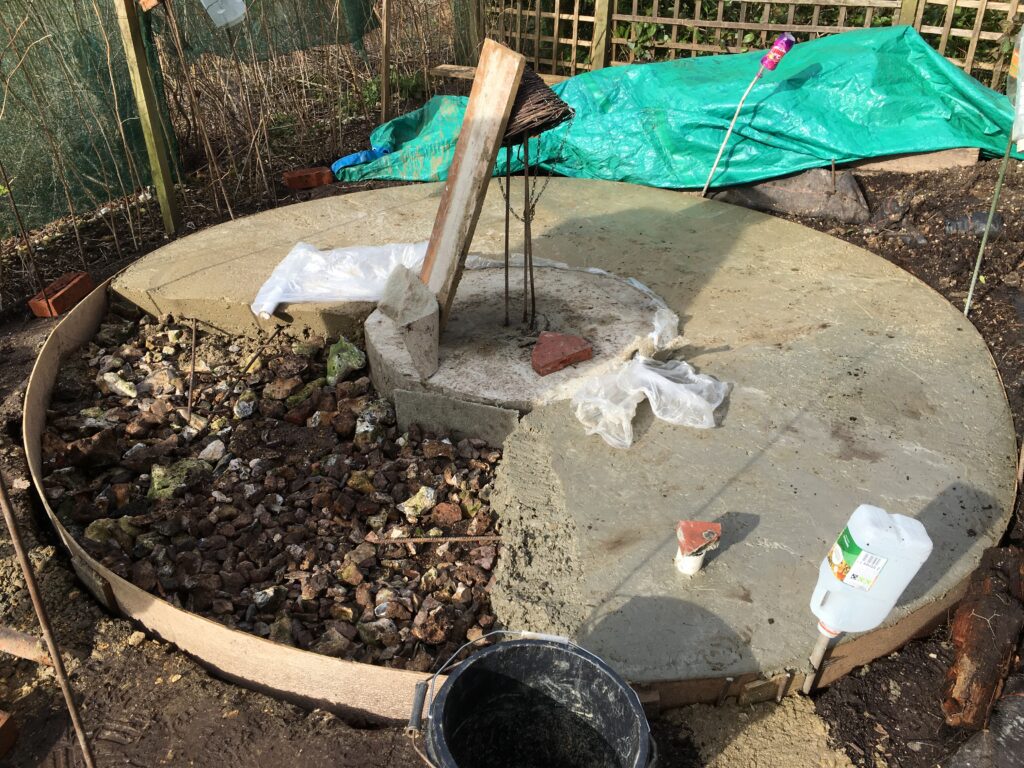
Later that night I found some rebar in the garden and Luke and I hammered it into the concrete to give the next pour in a weeks time something to anchor too Carpet and plastic was used to separate the pier block from the observatory slab.

